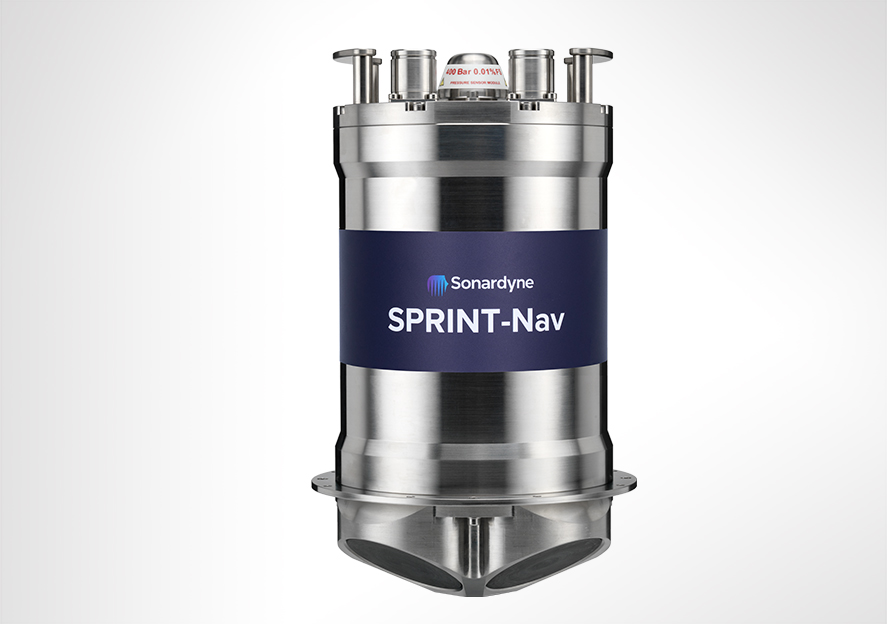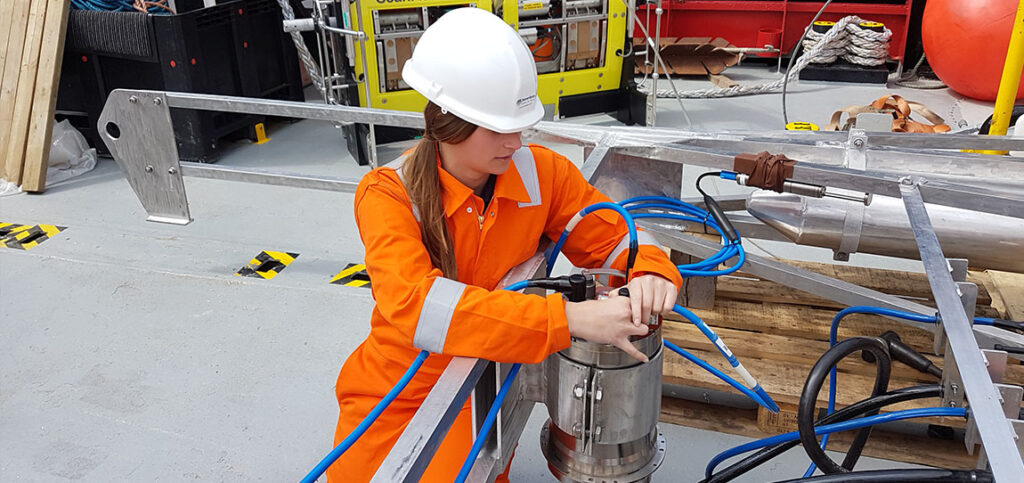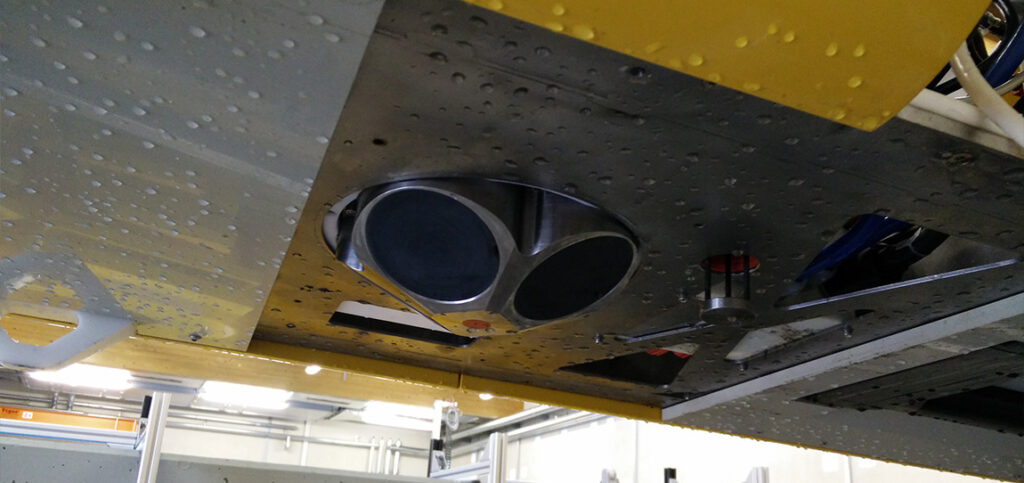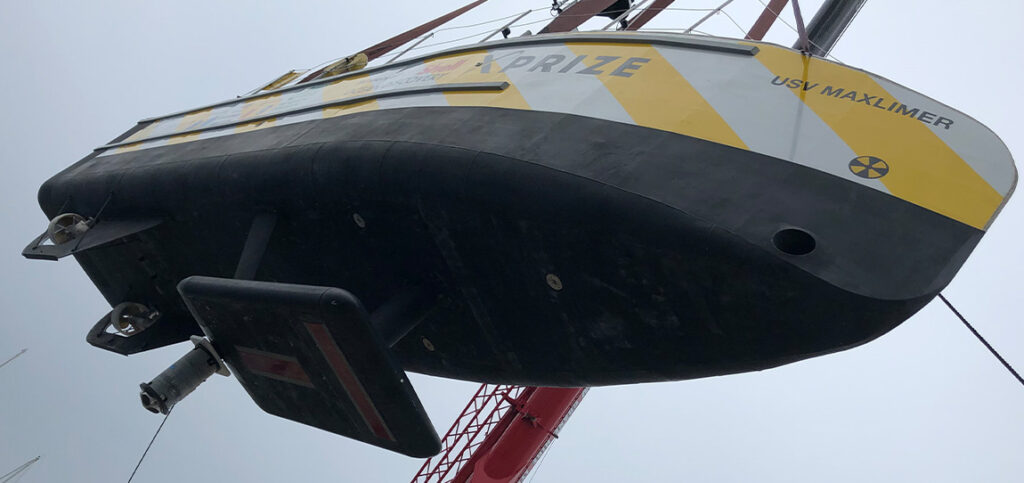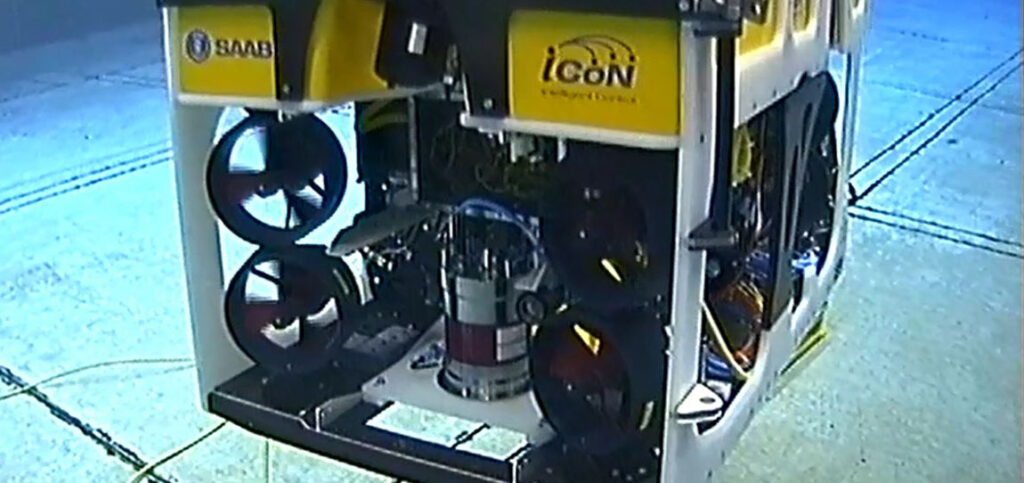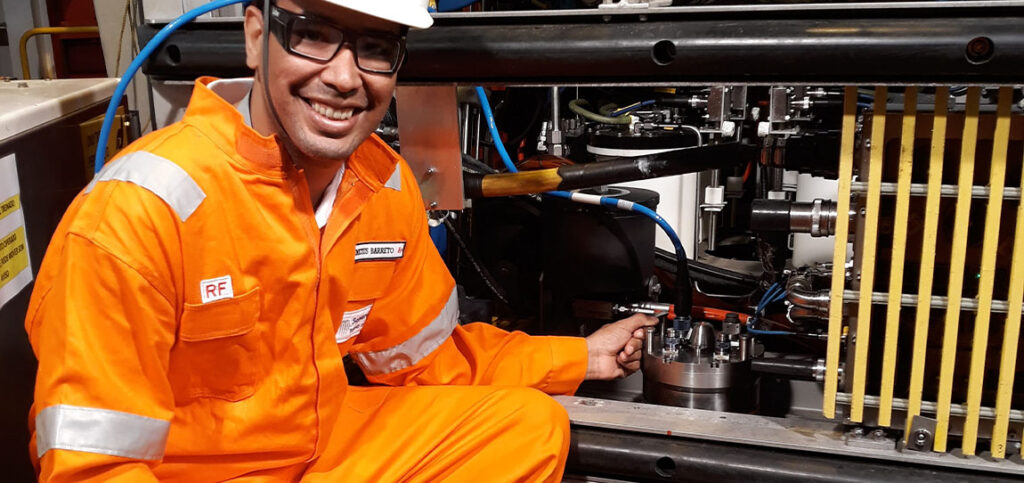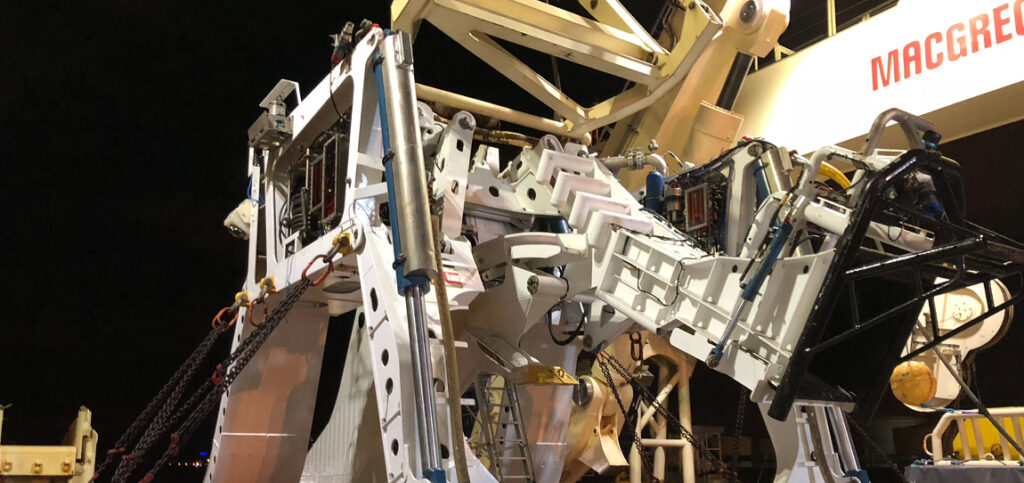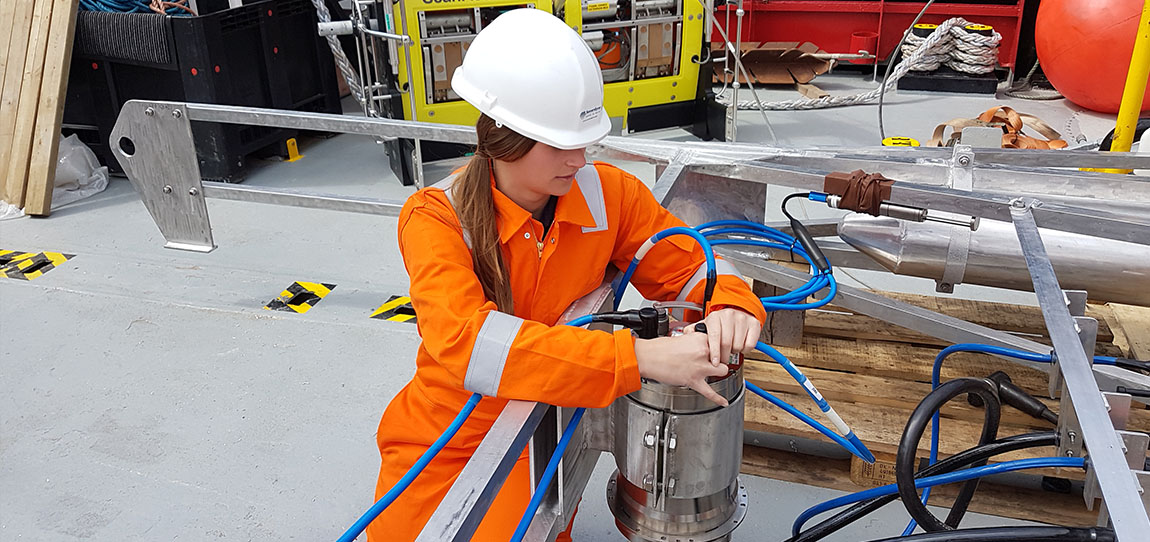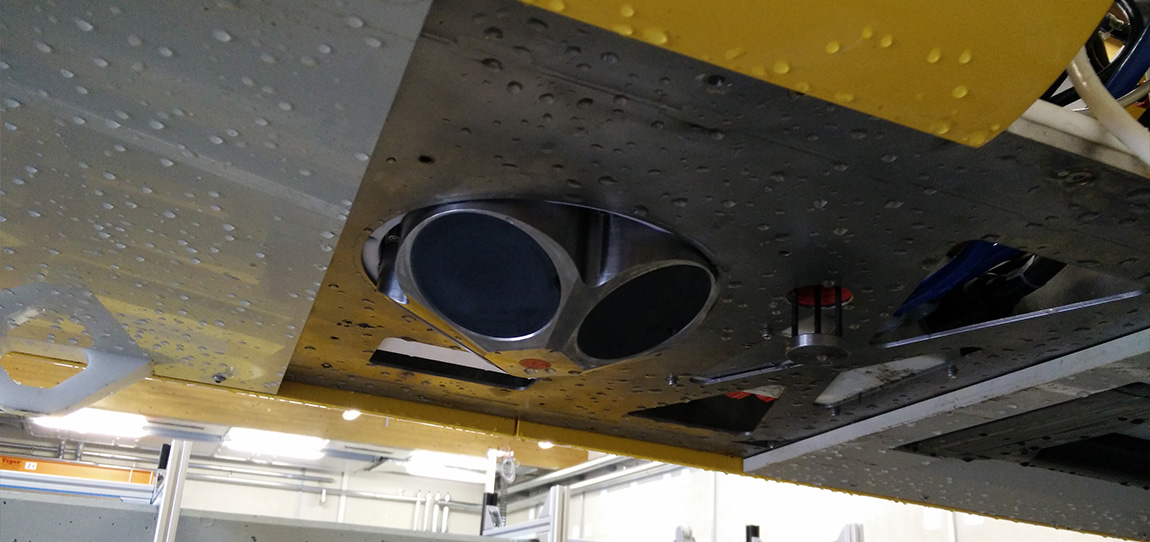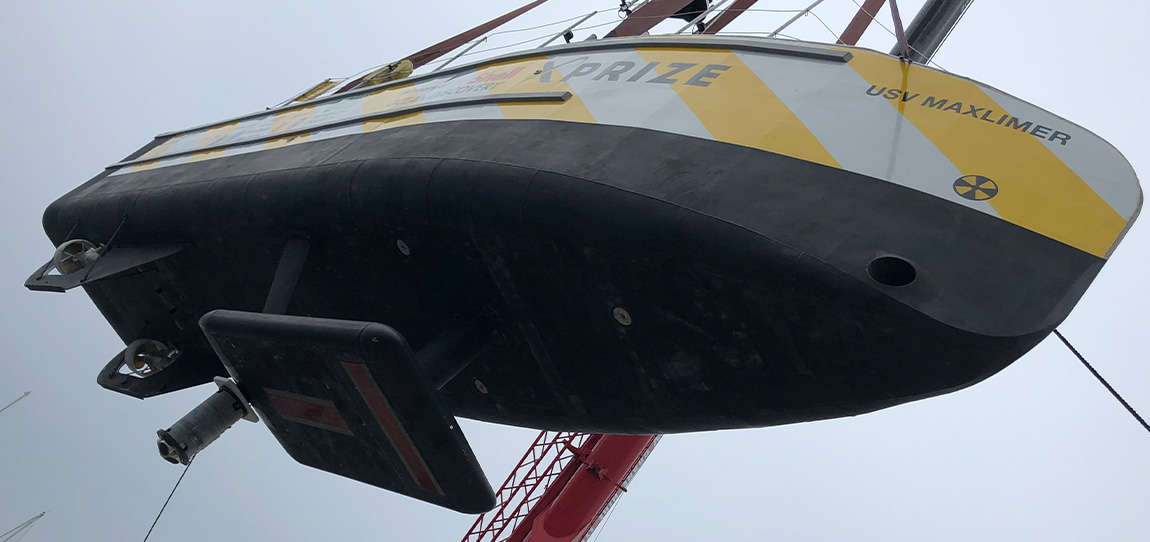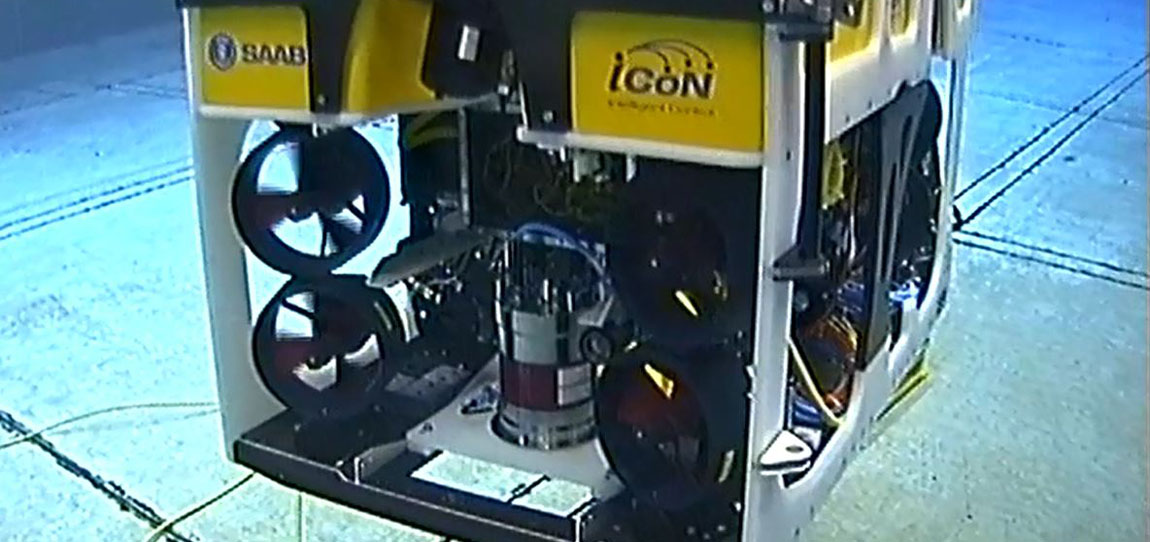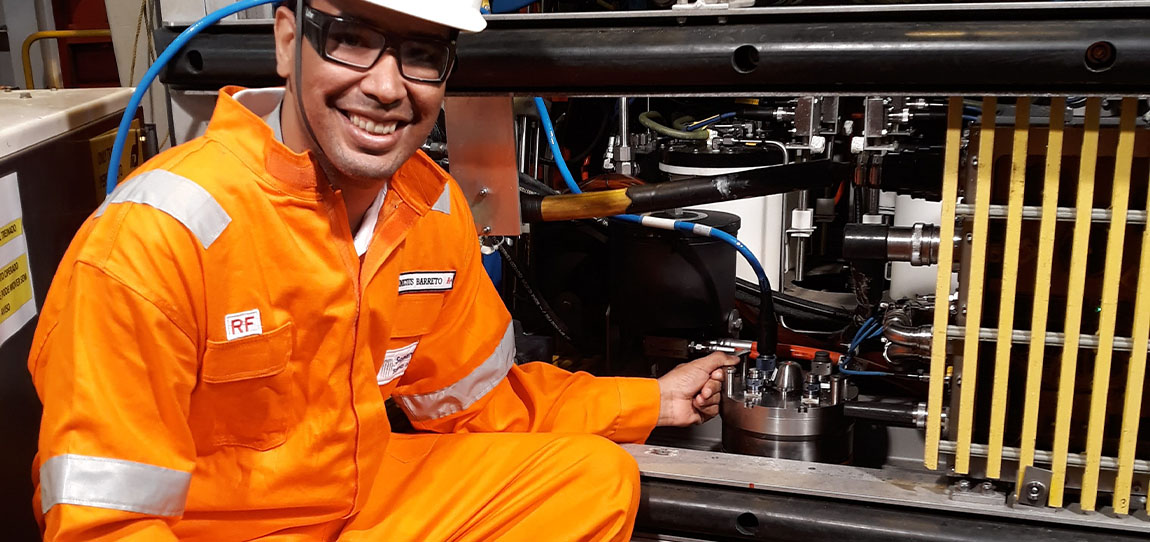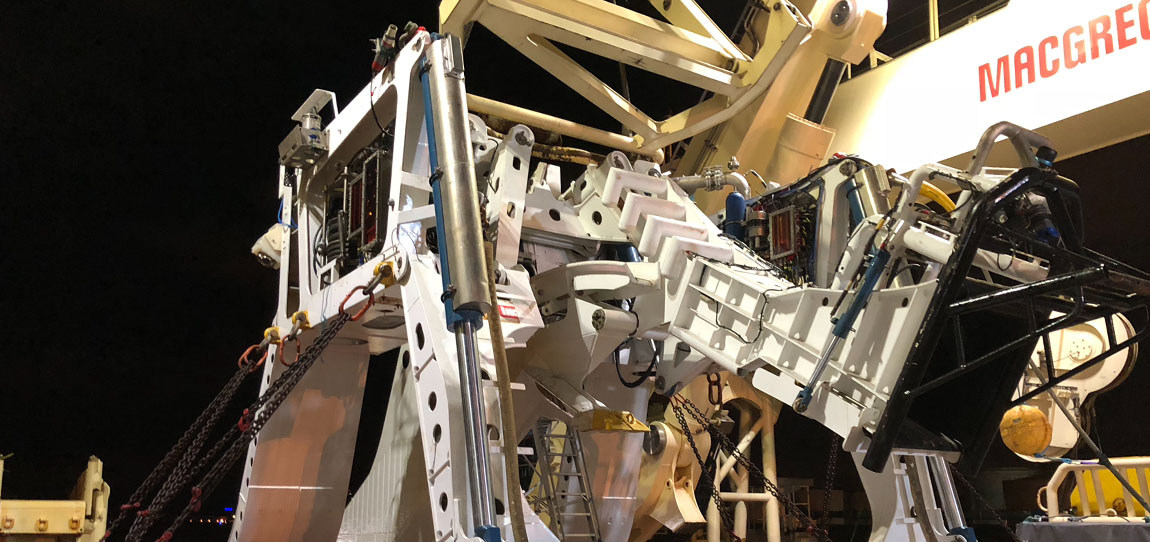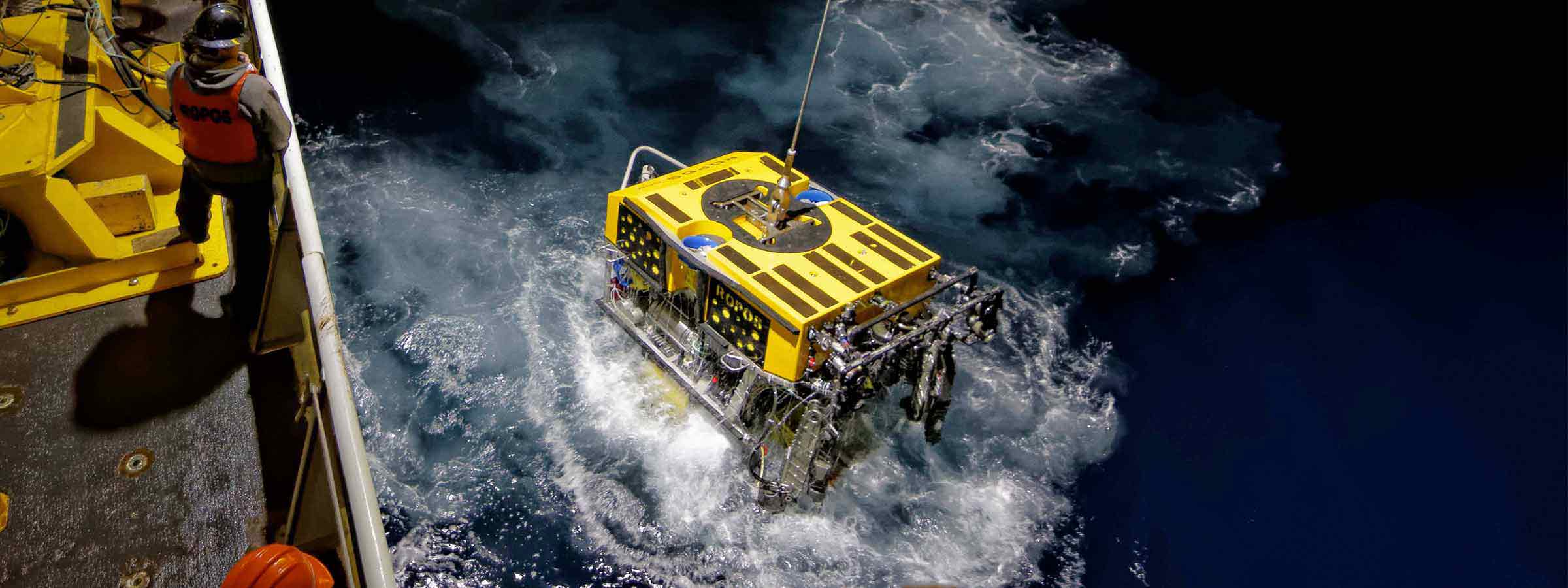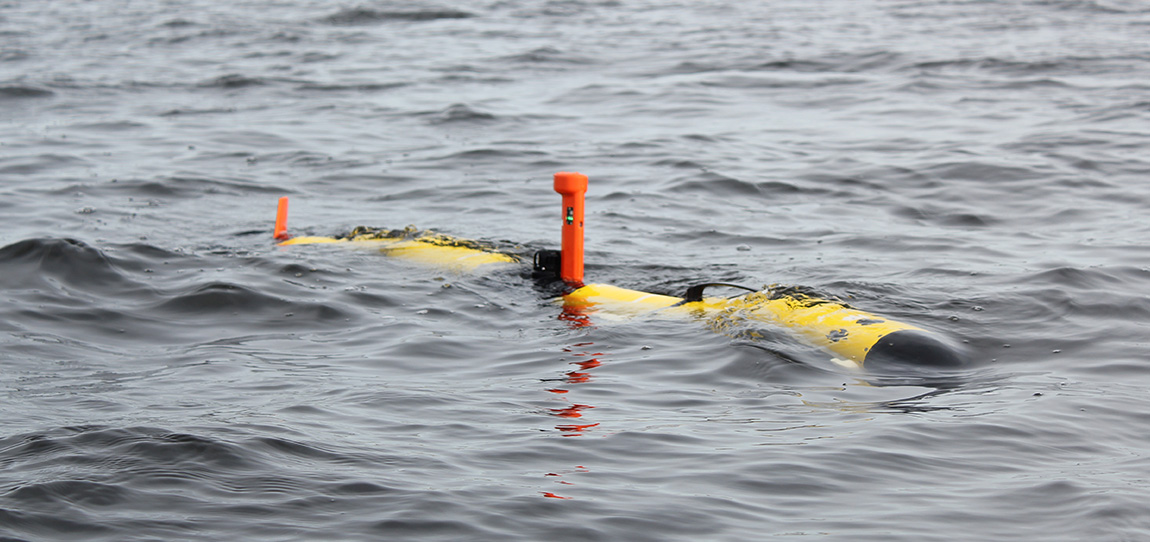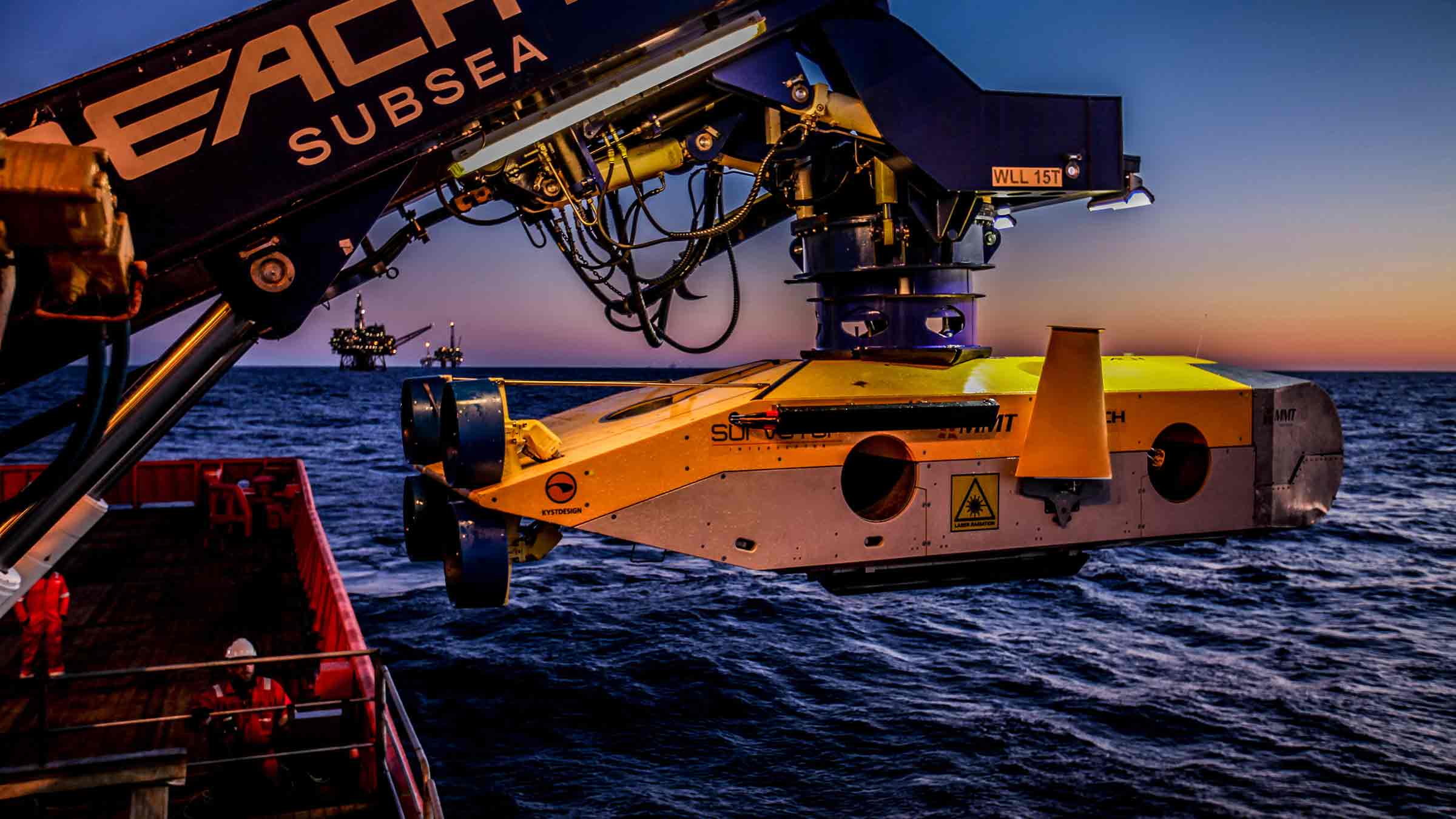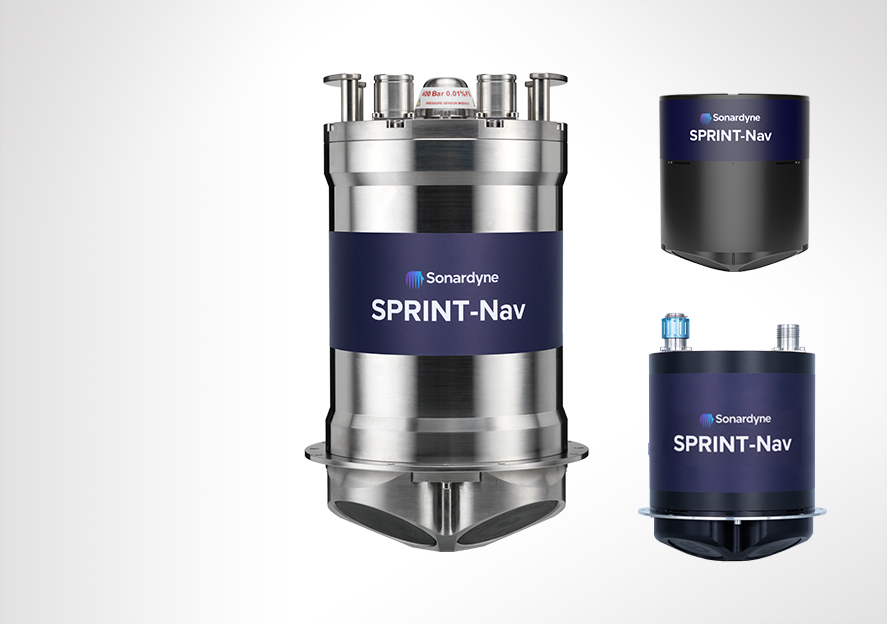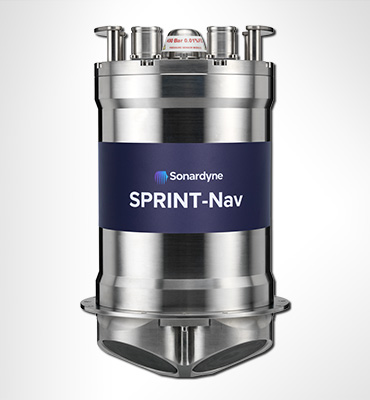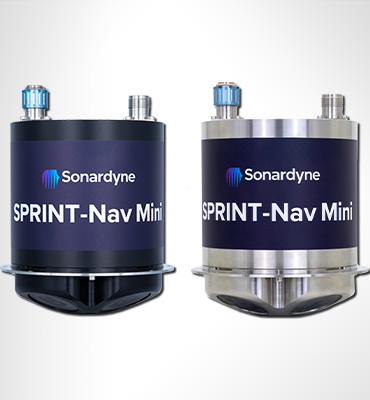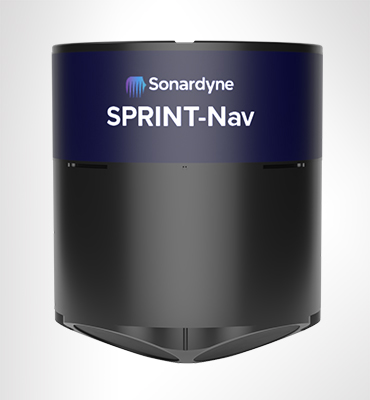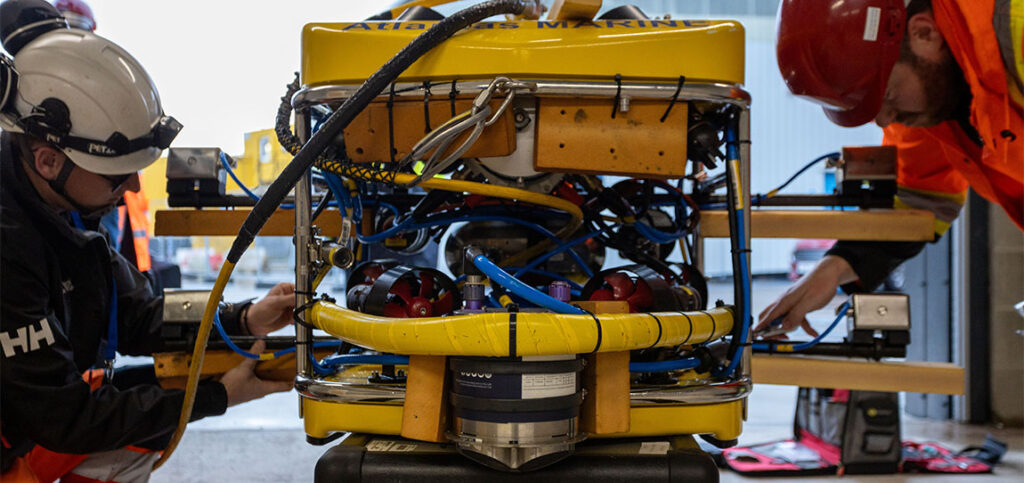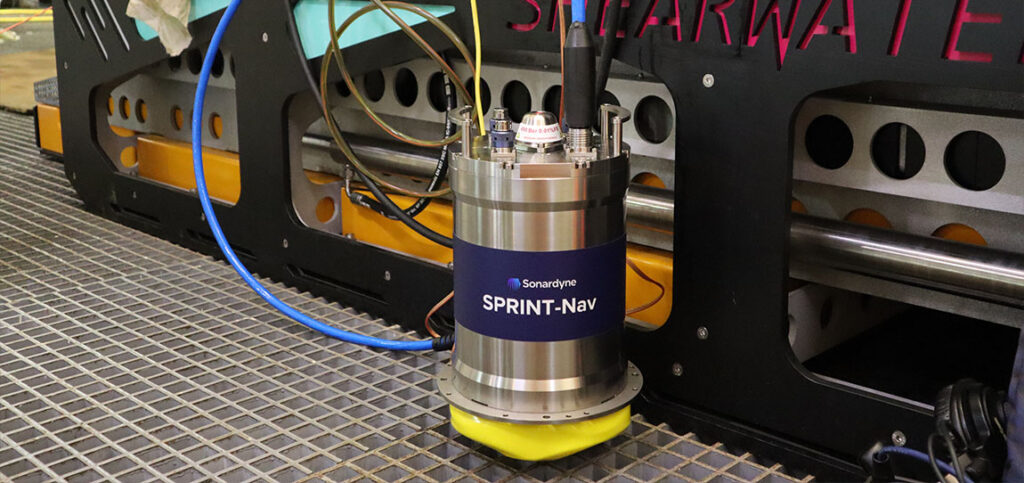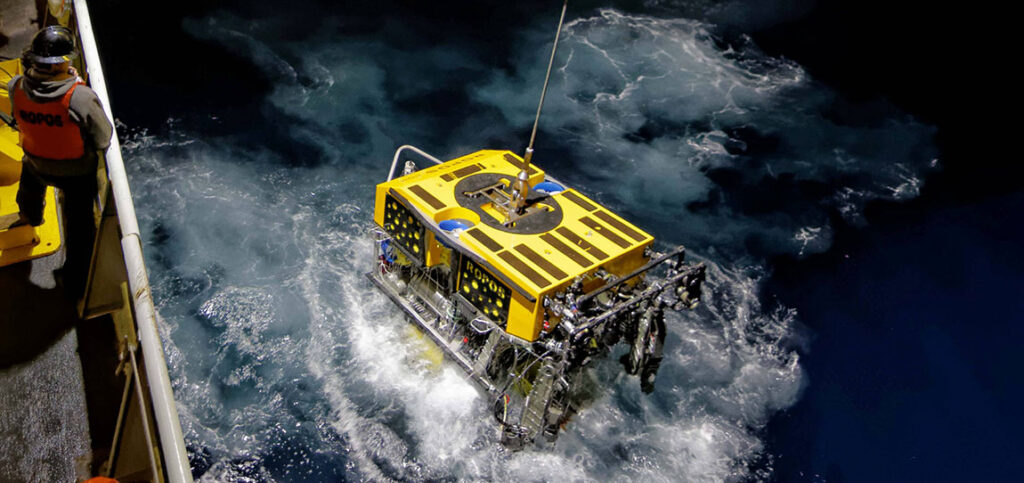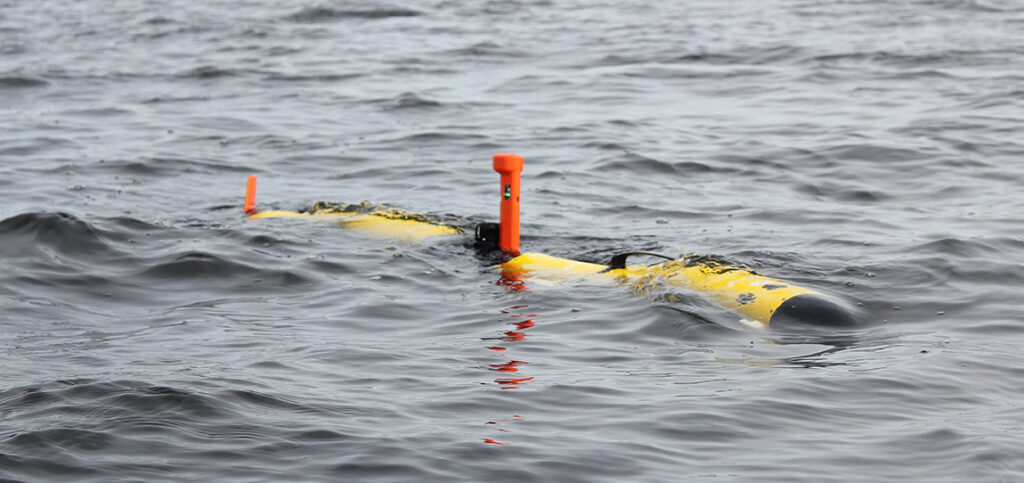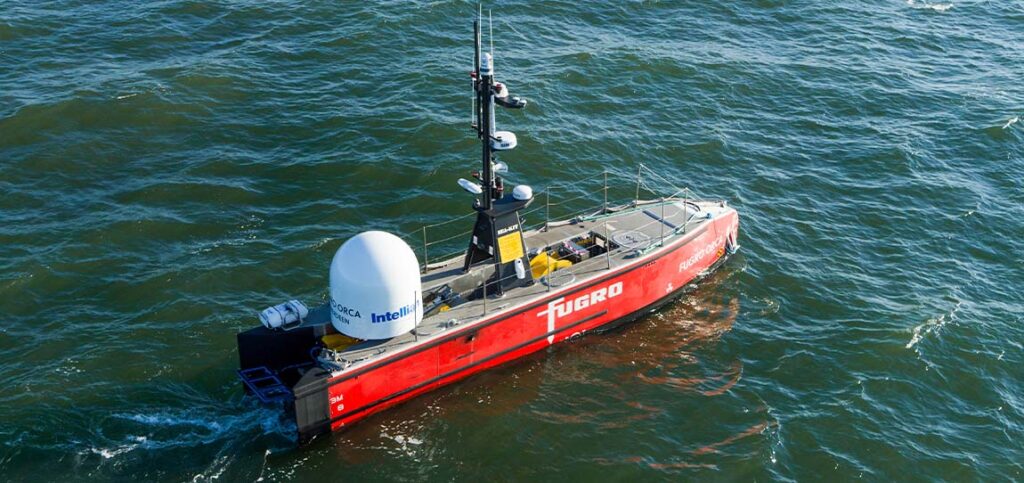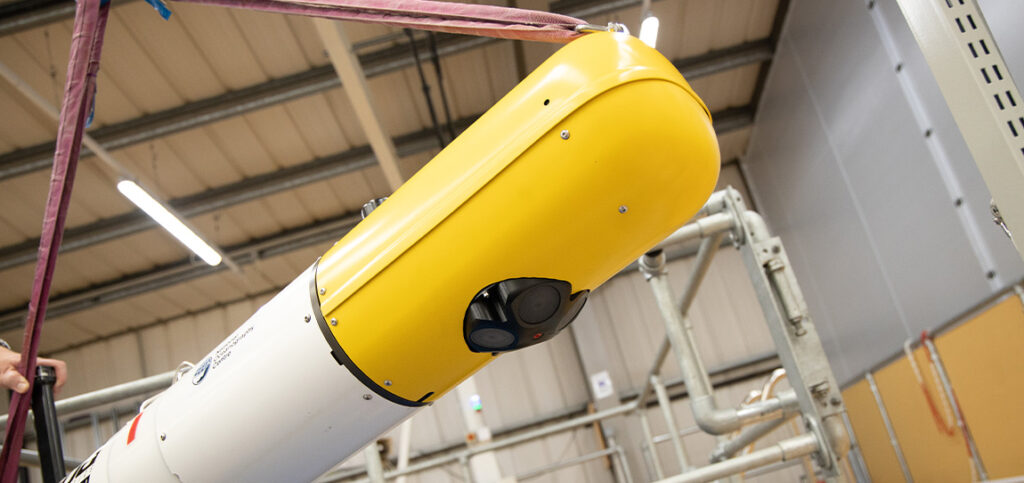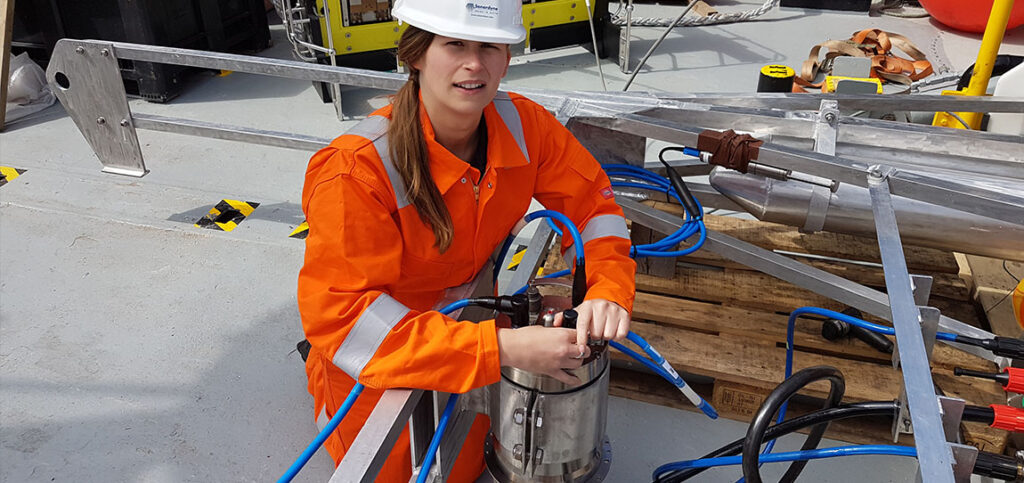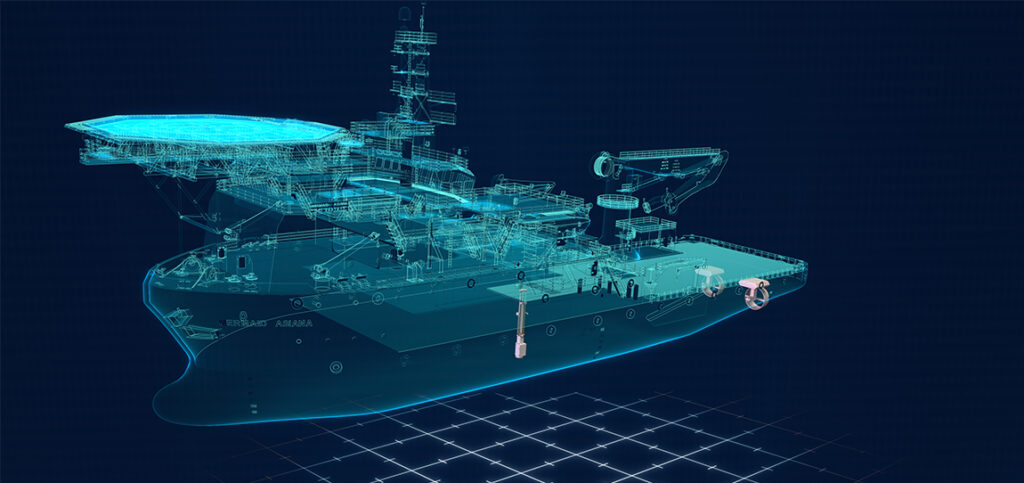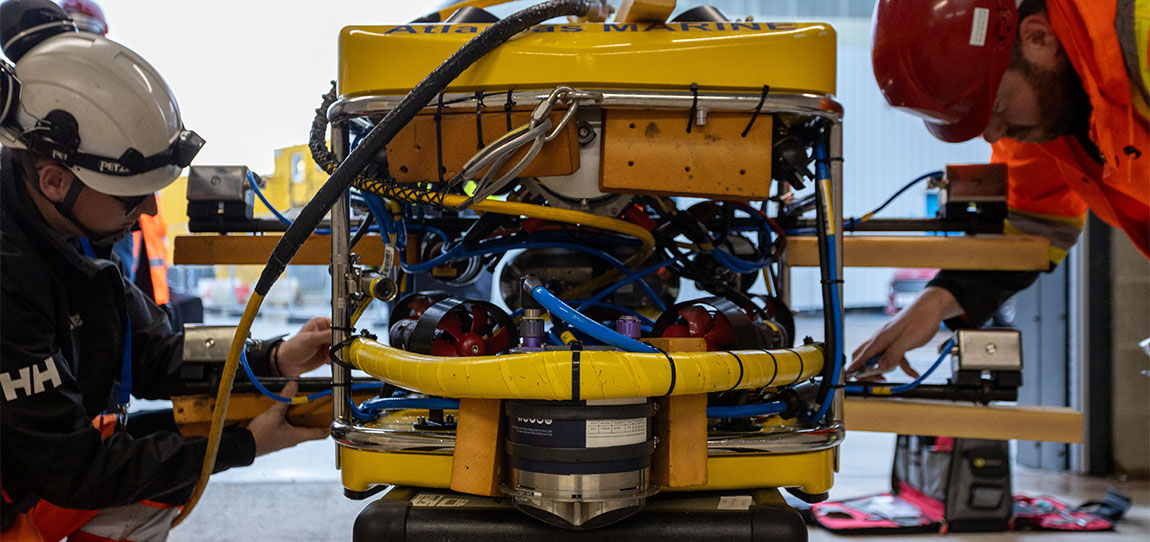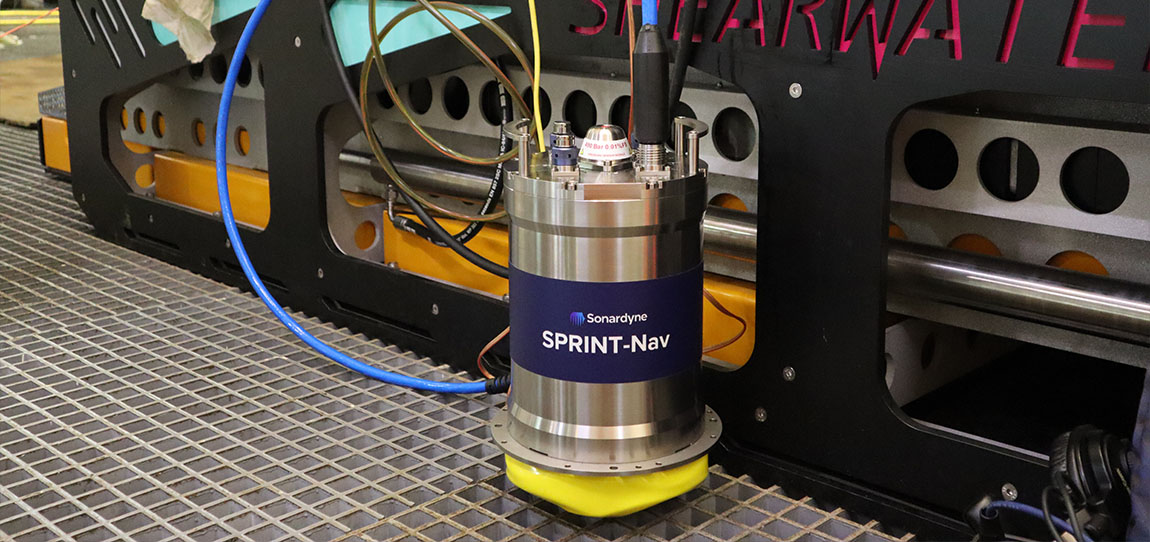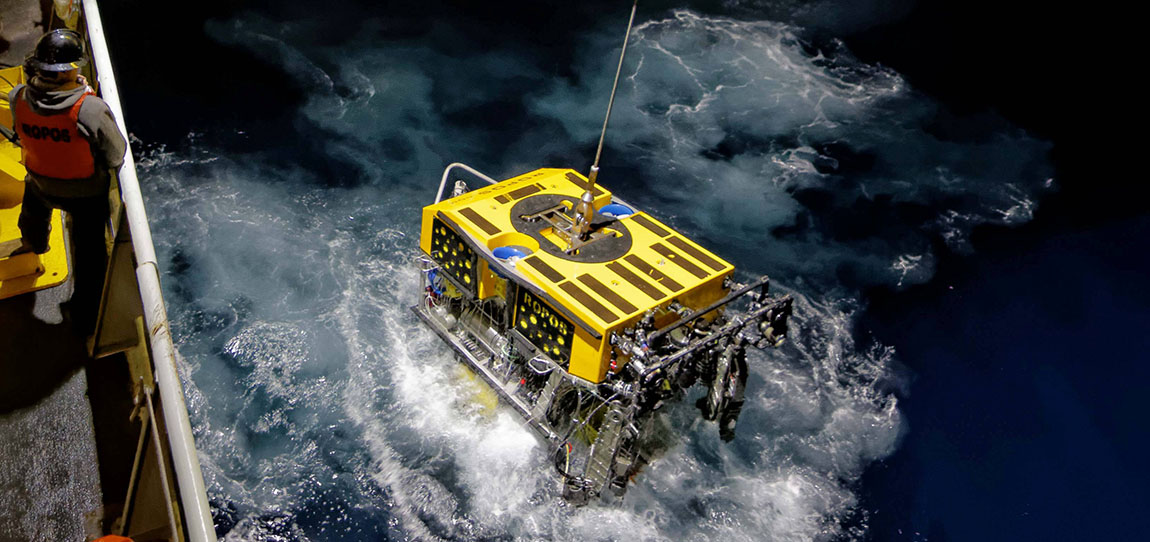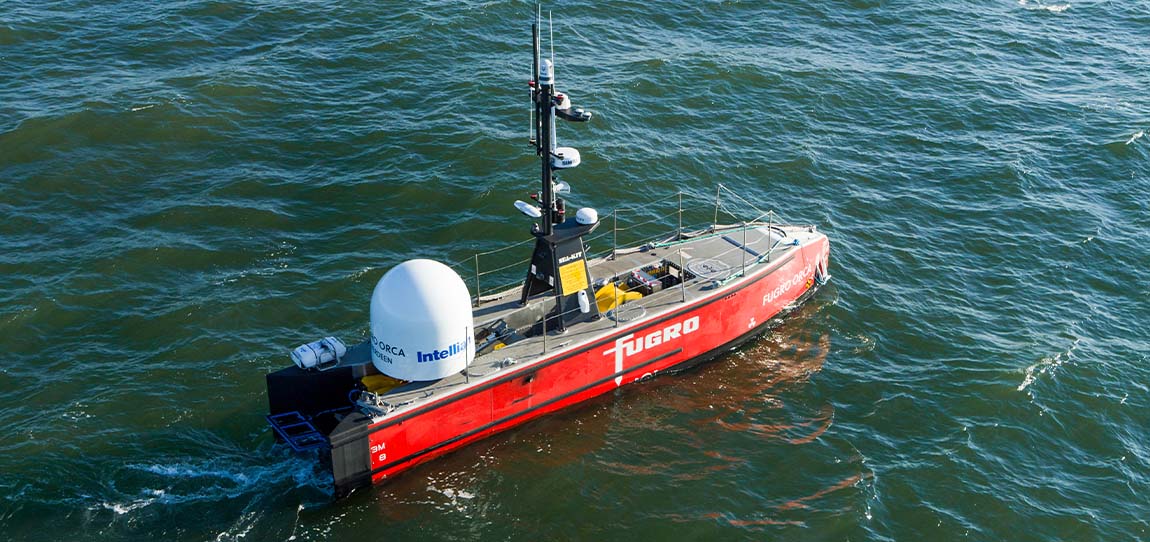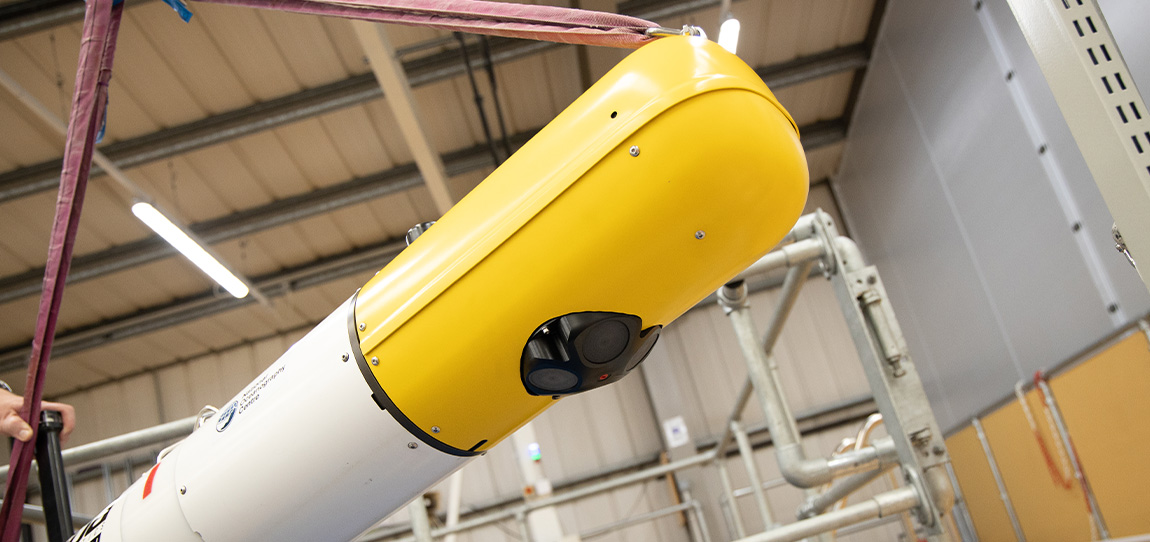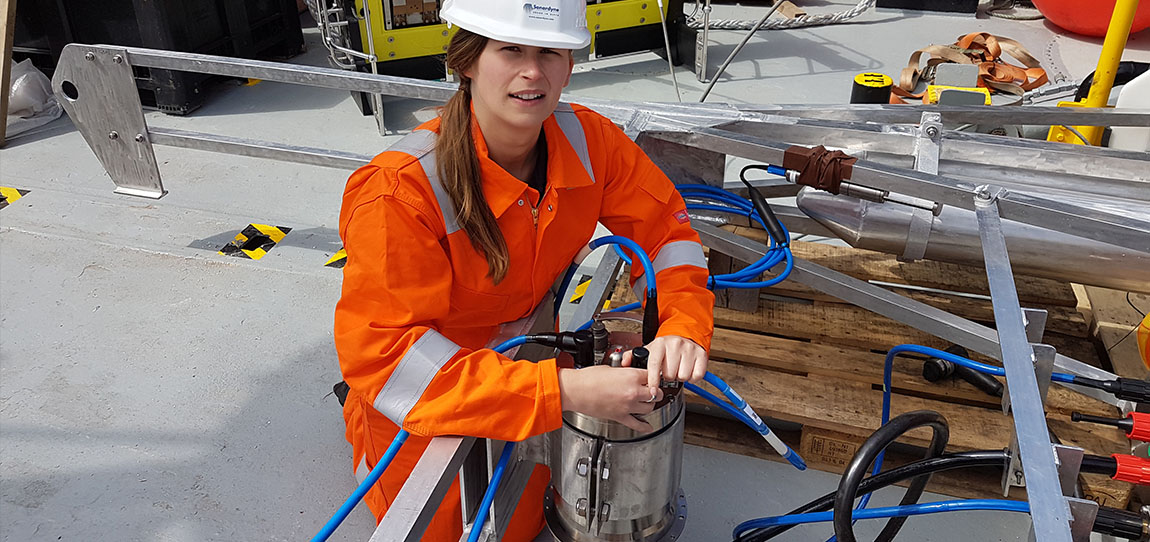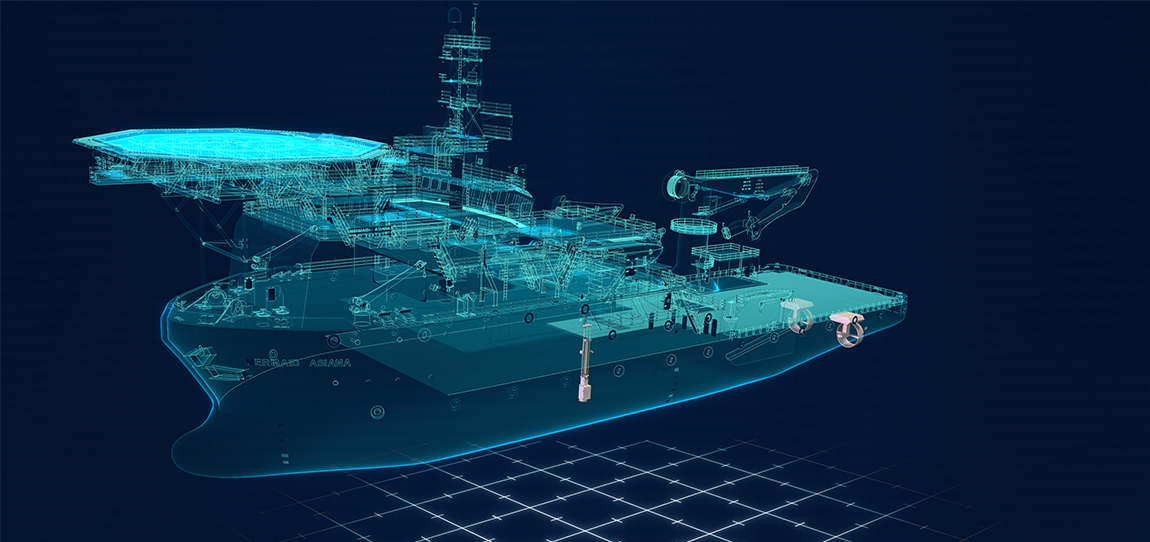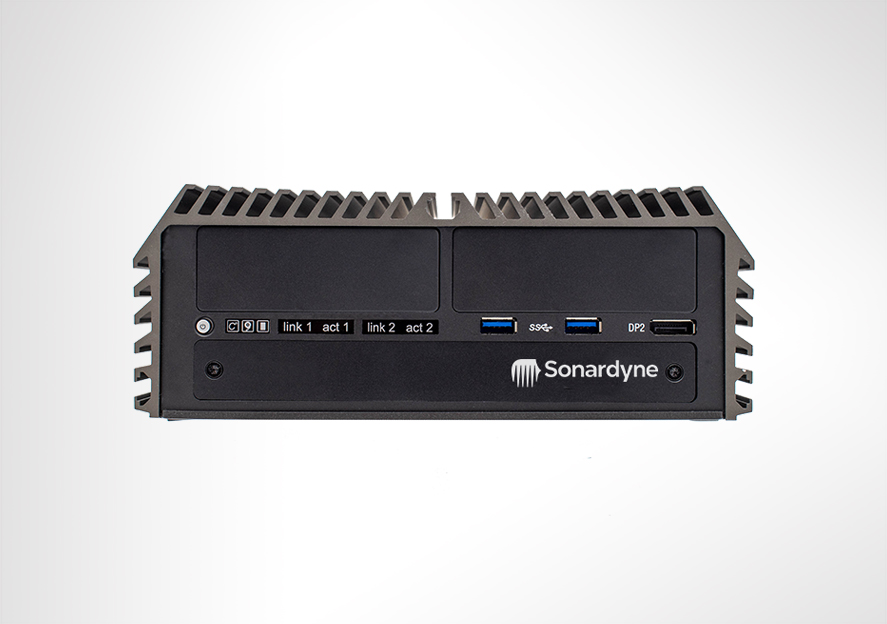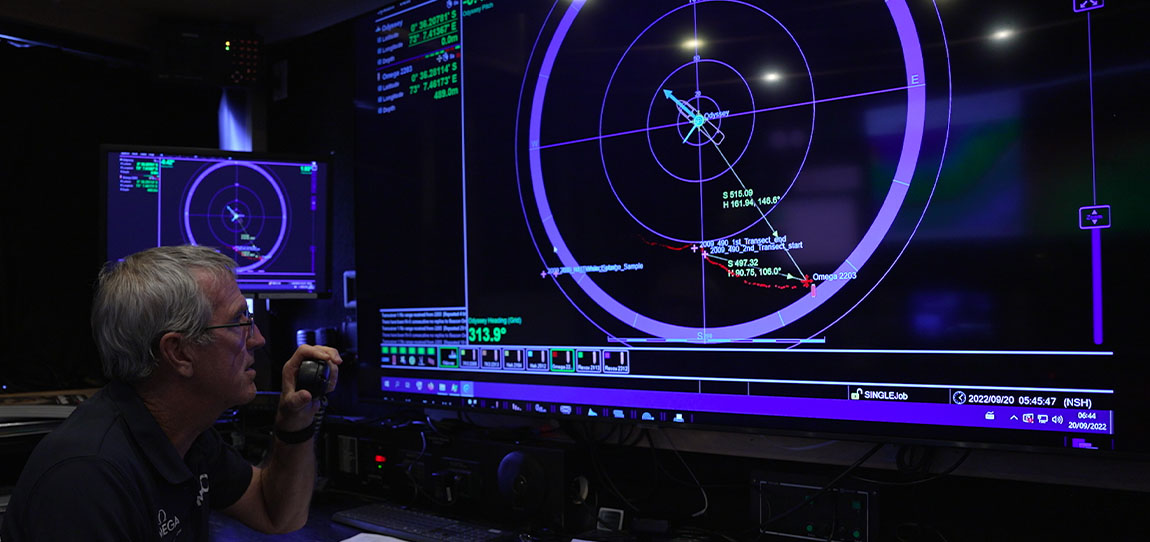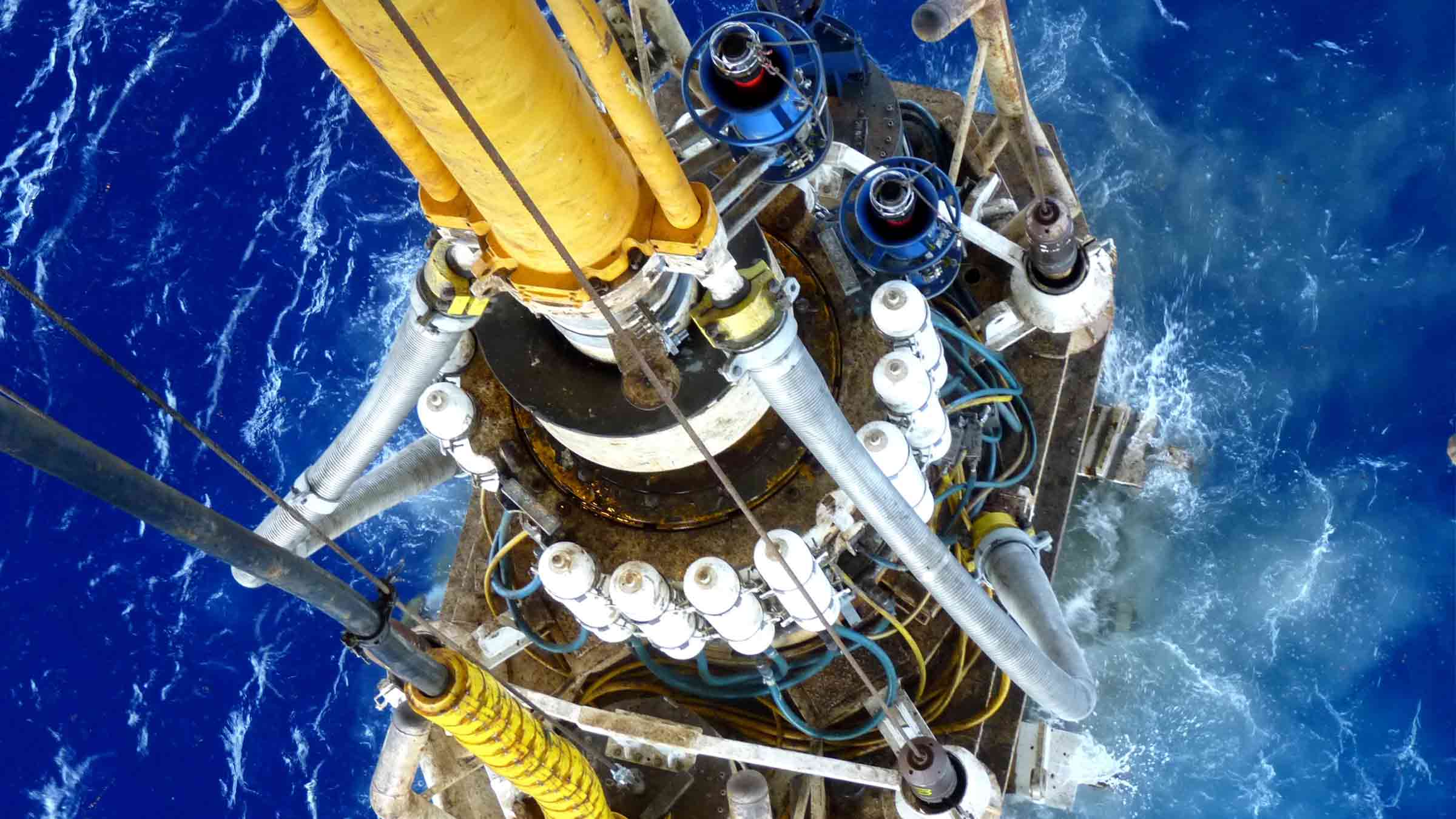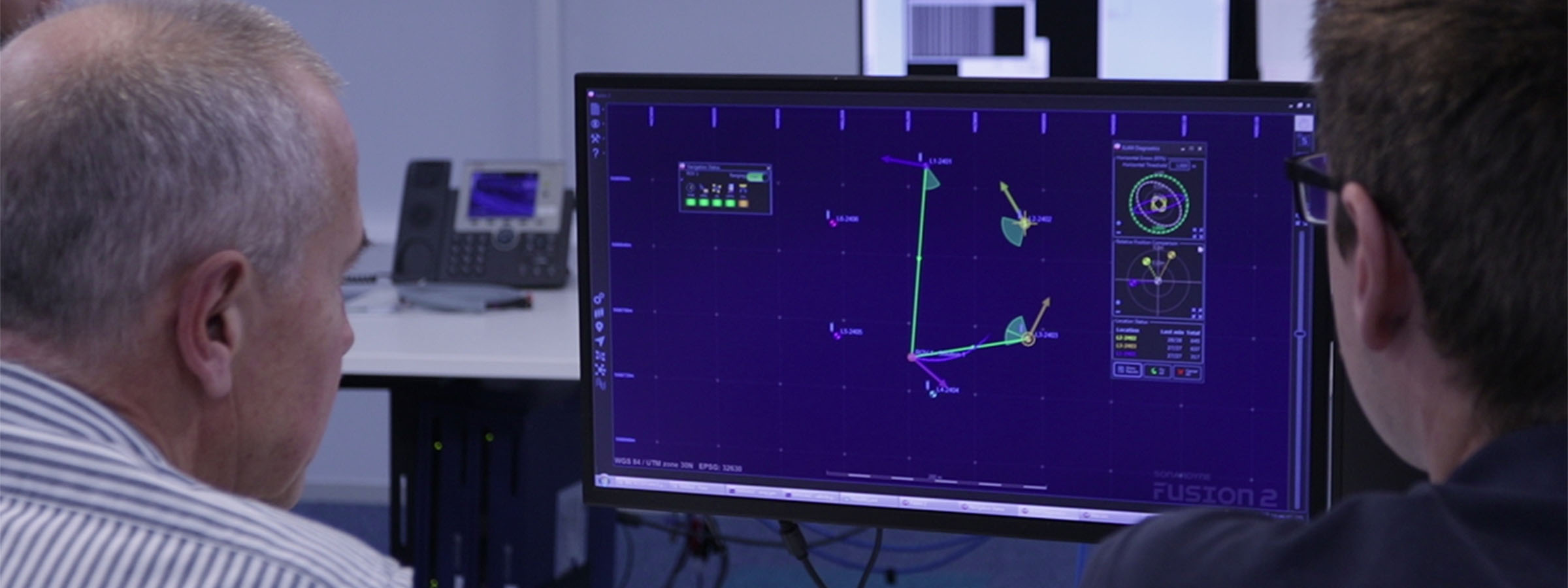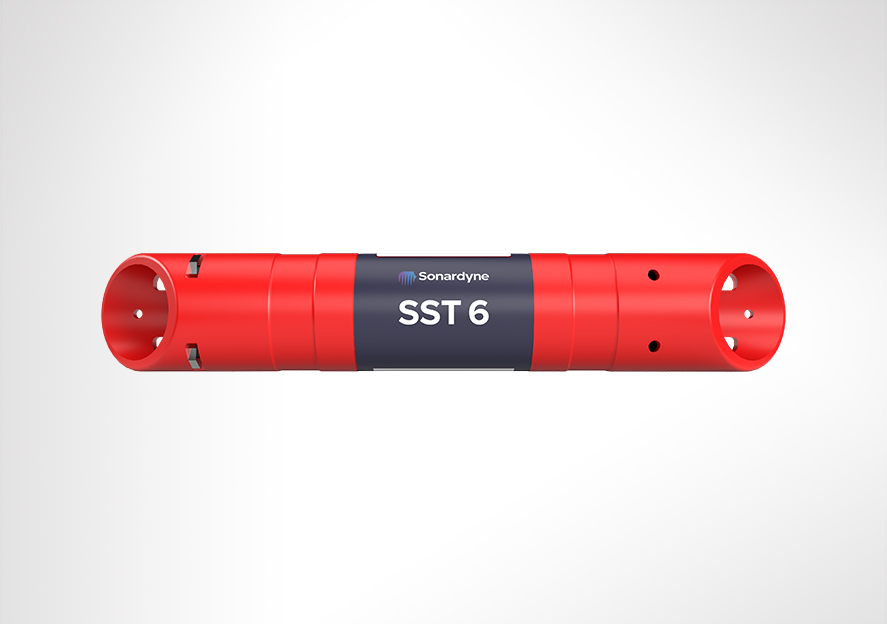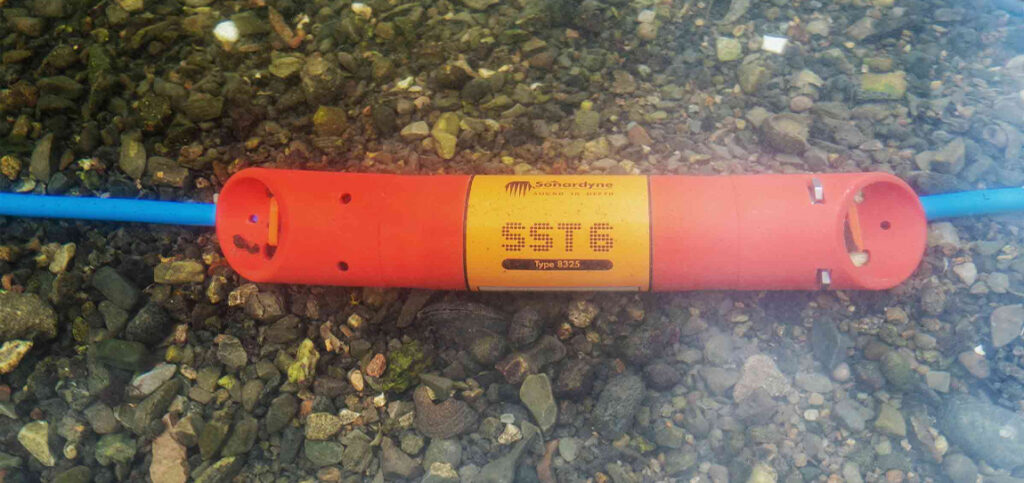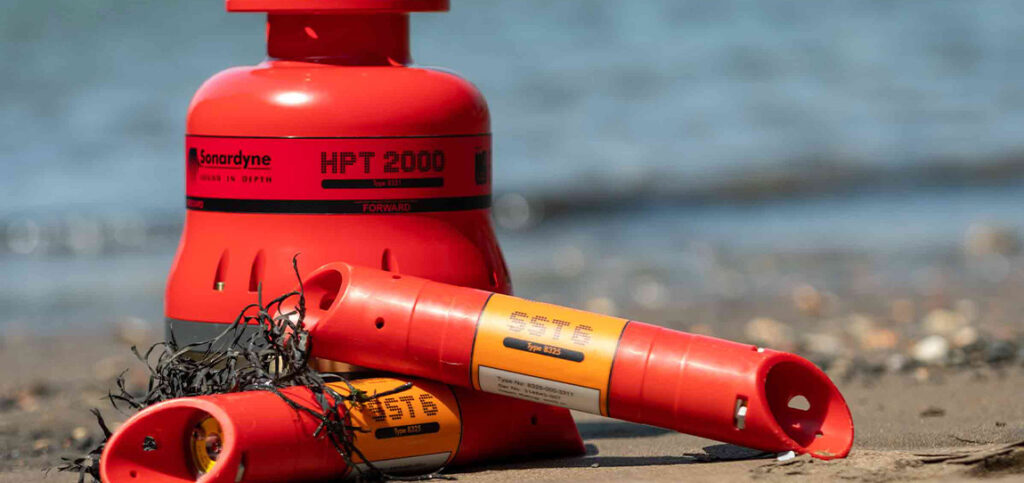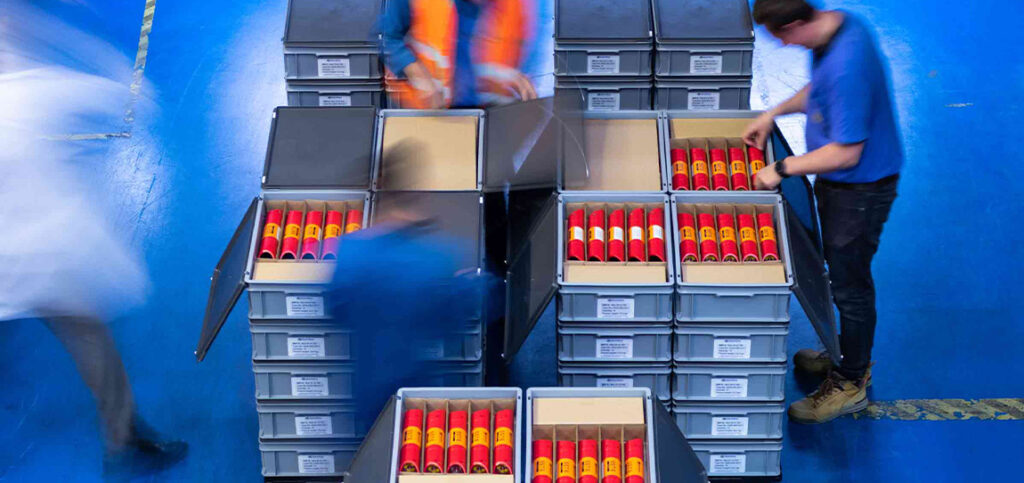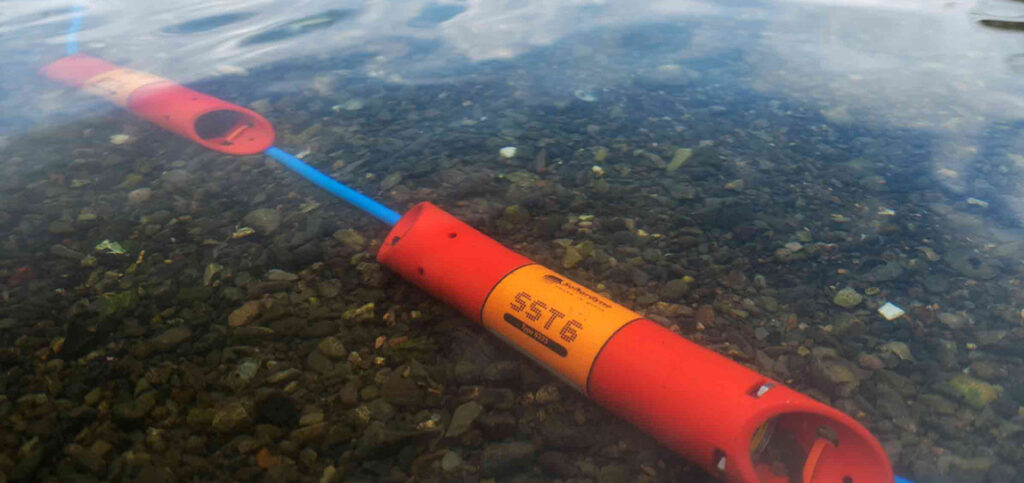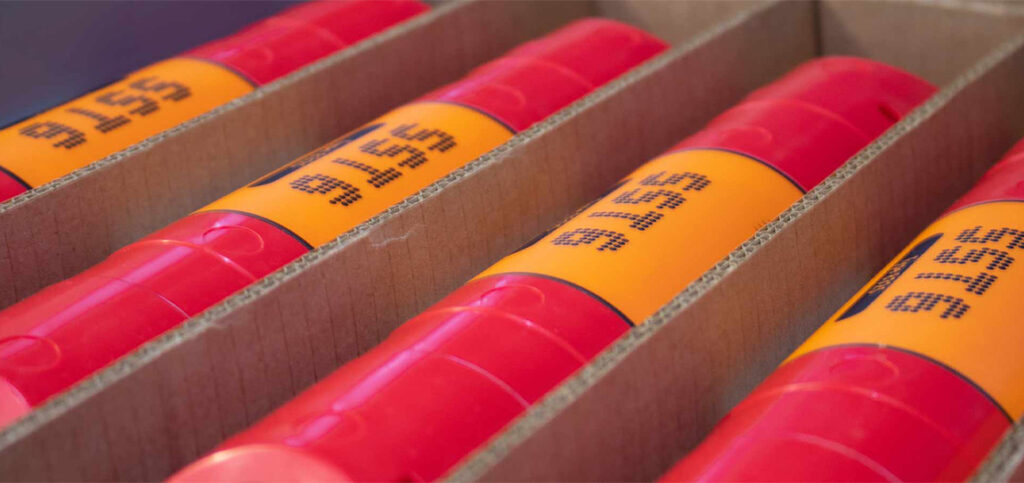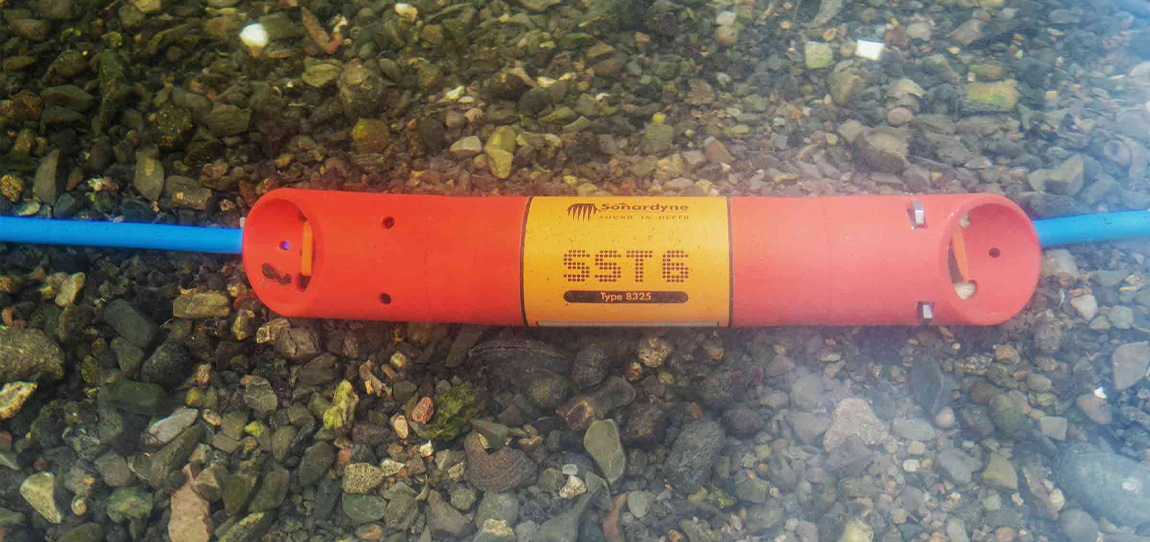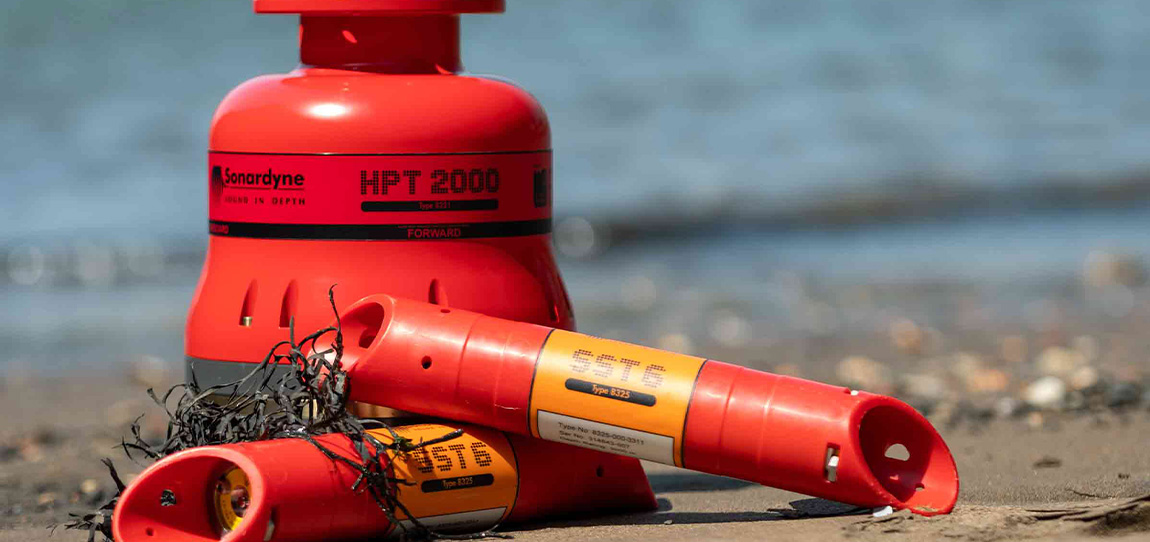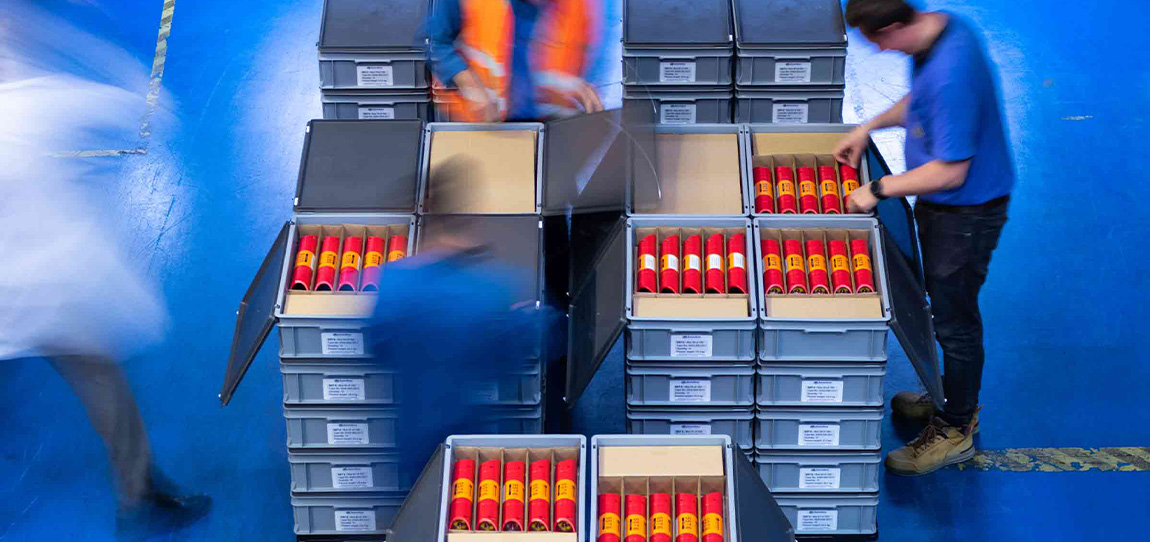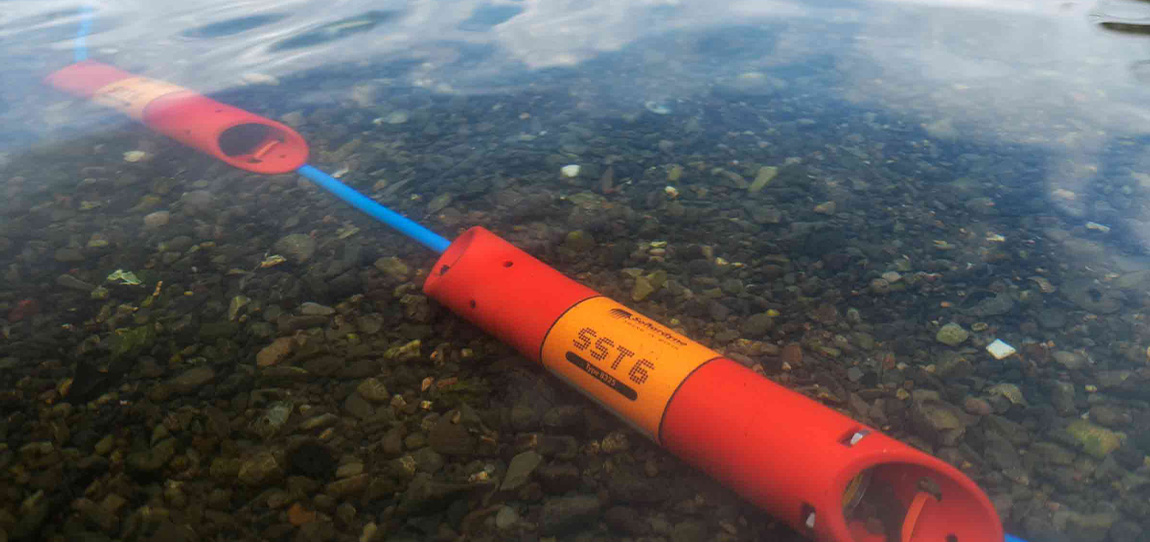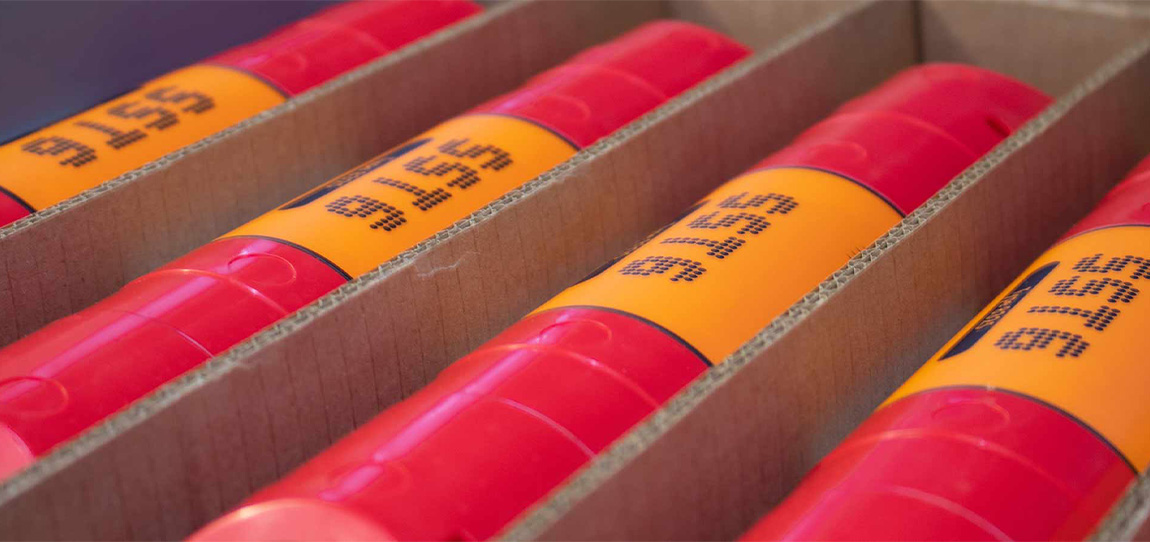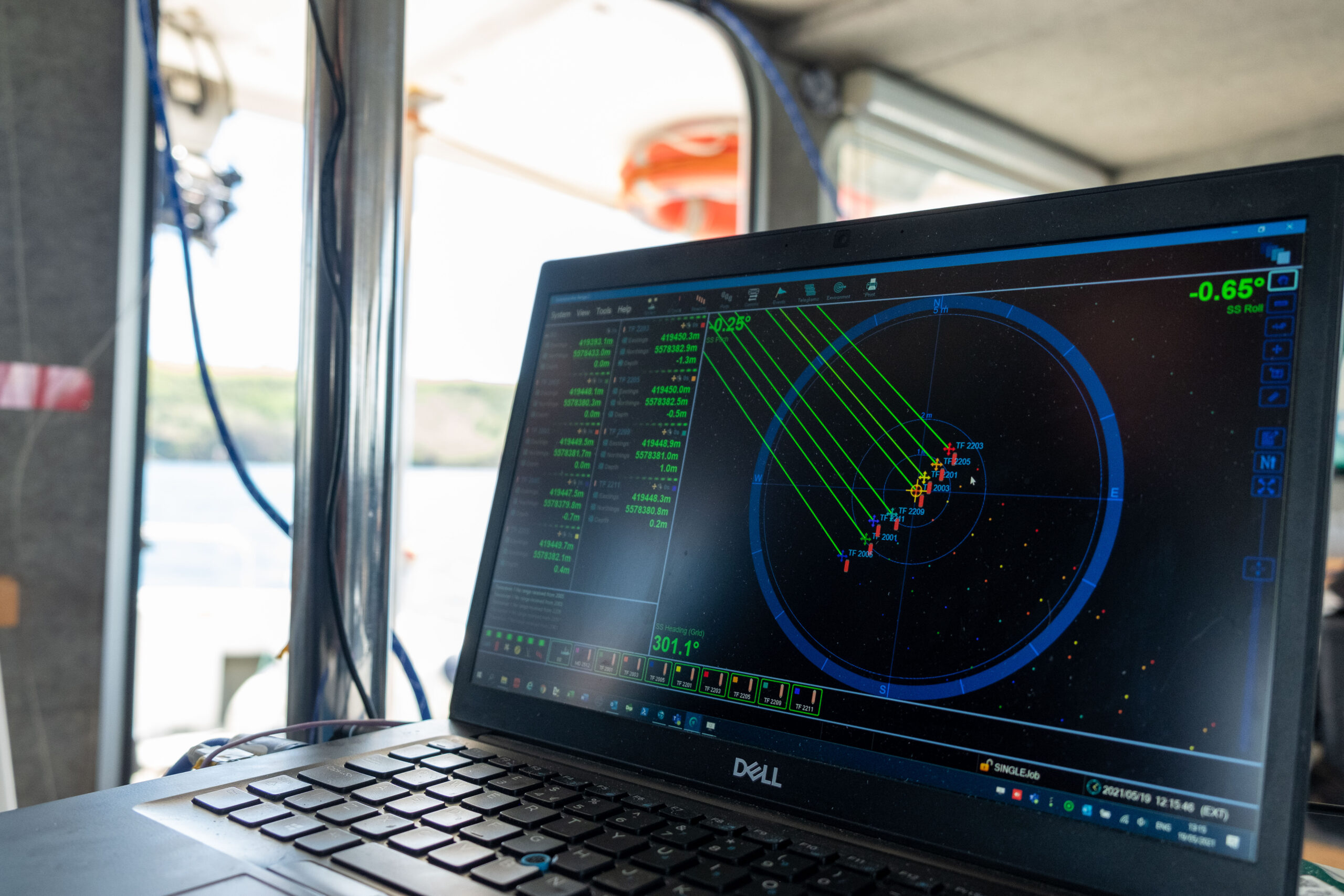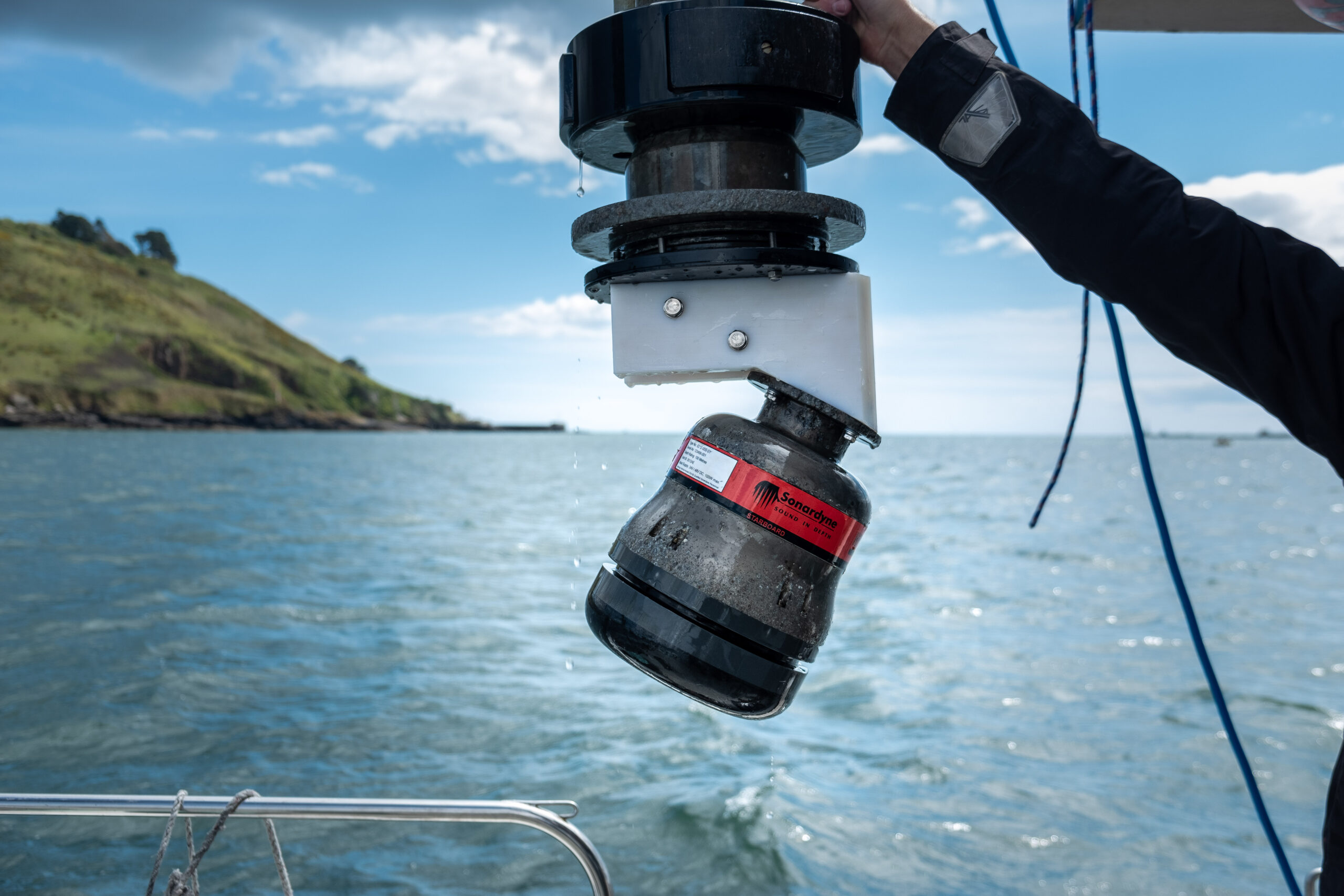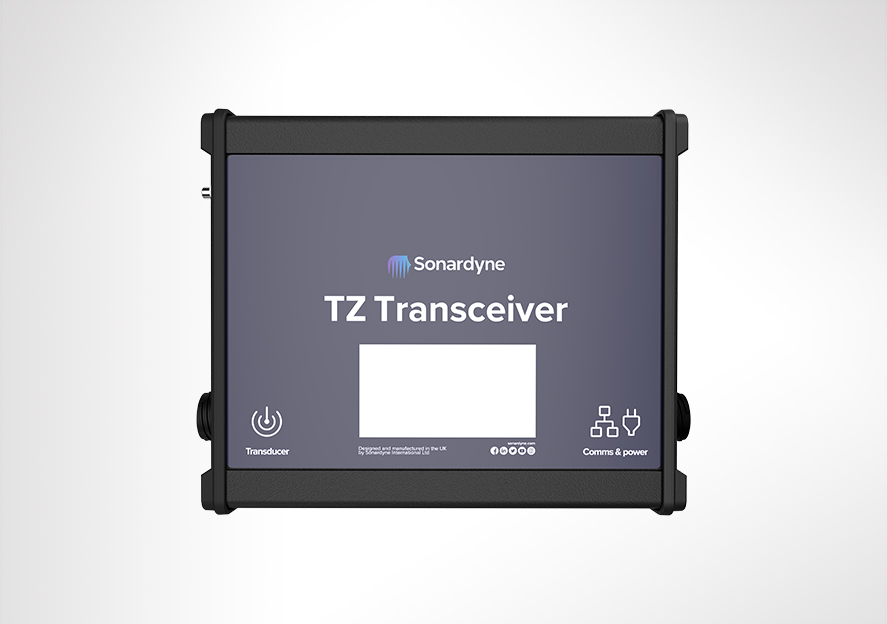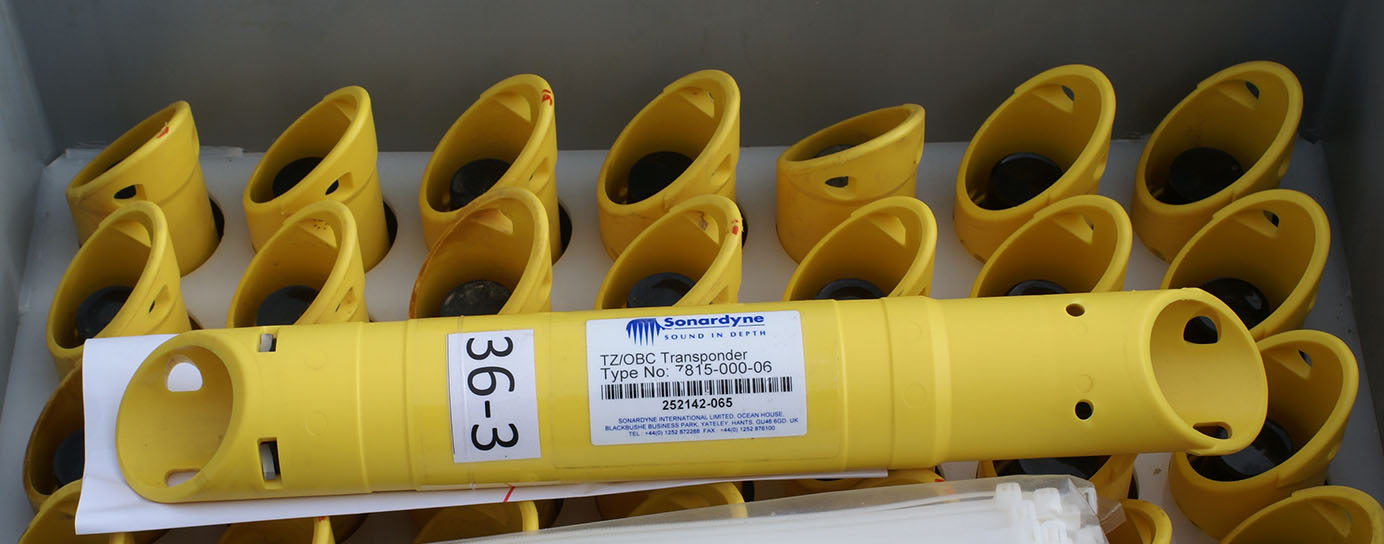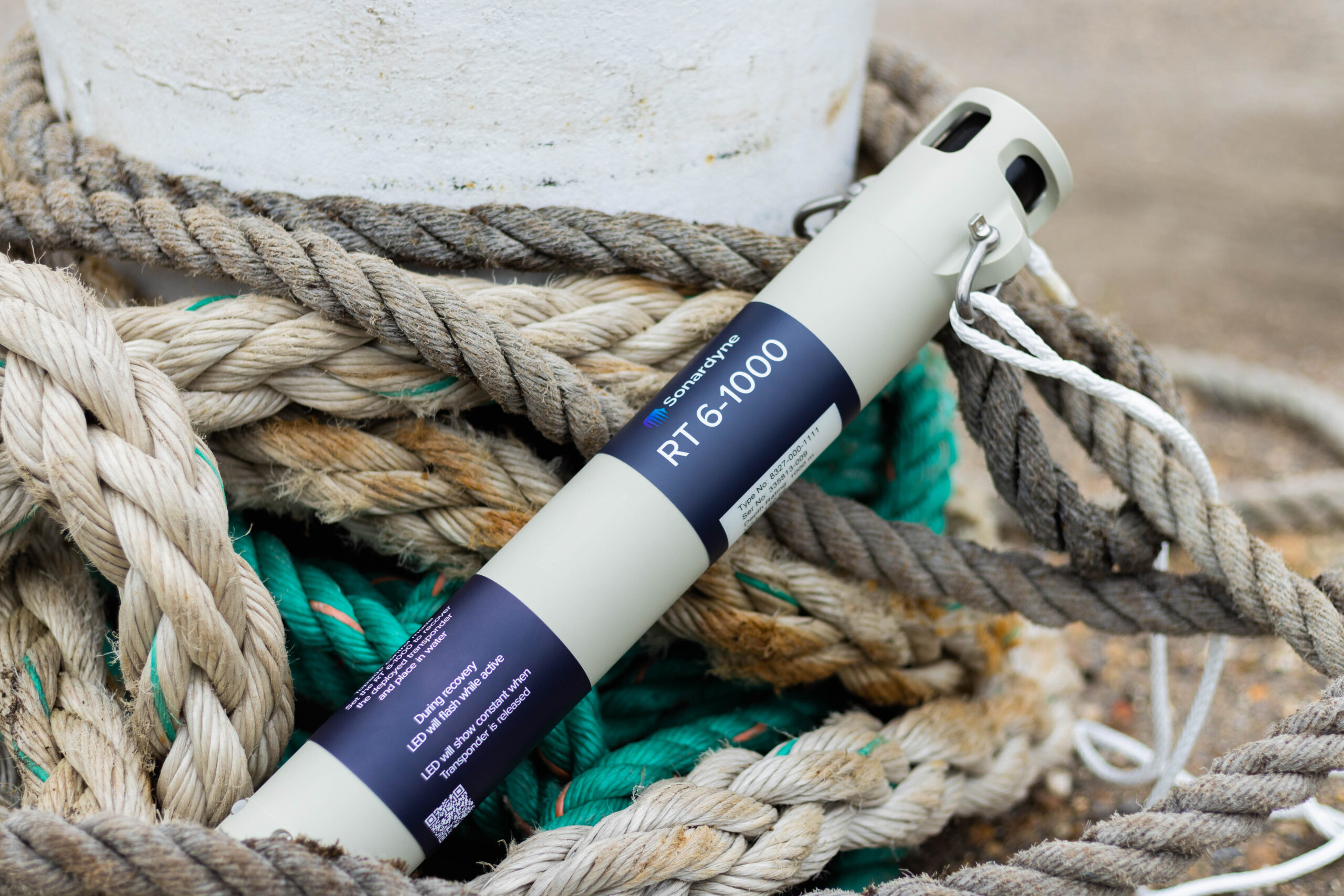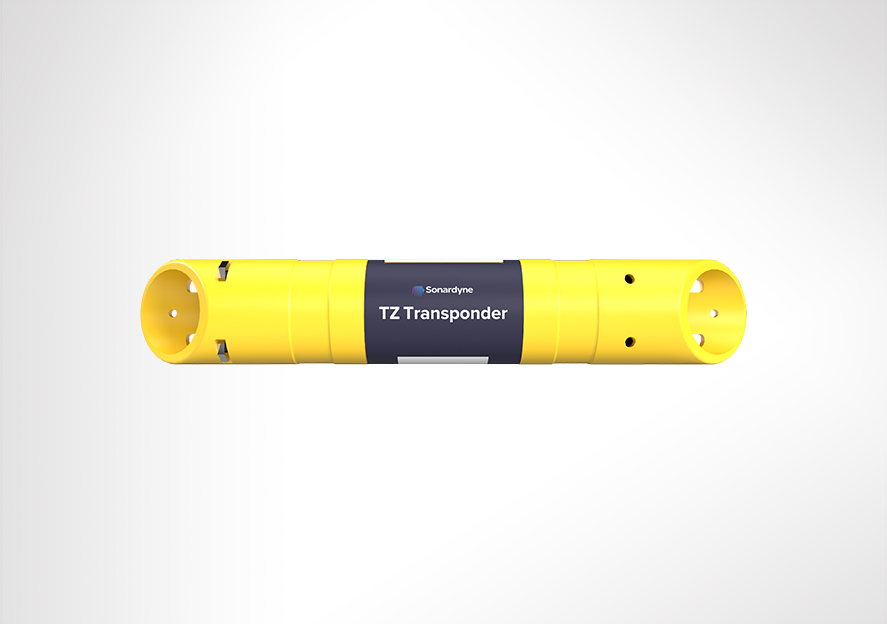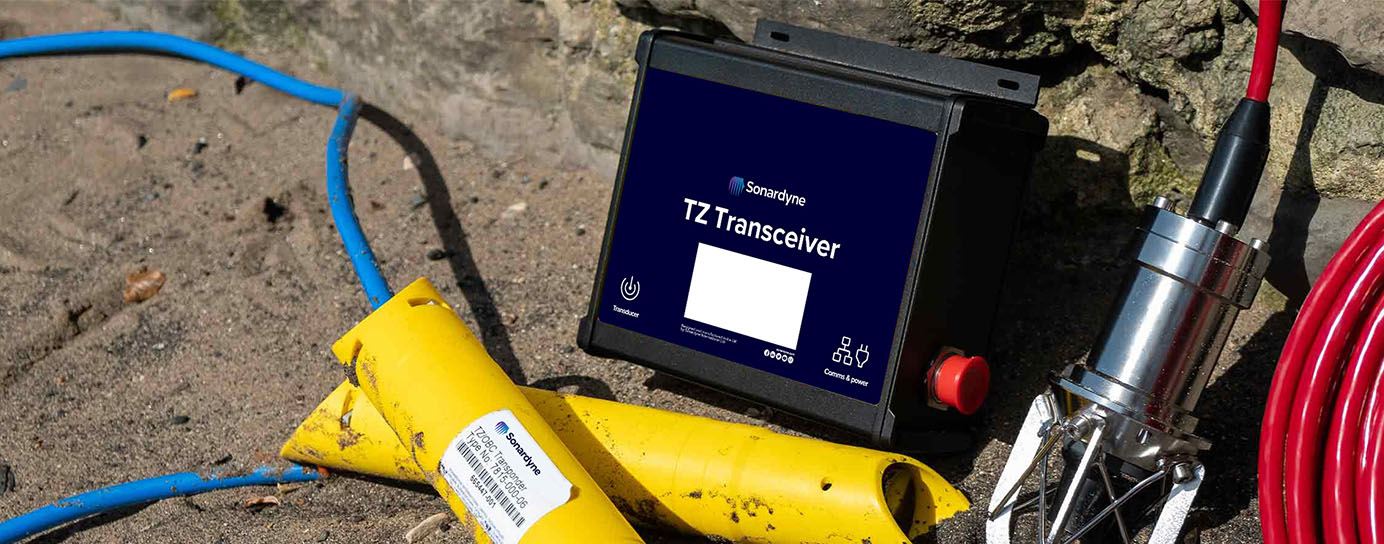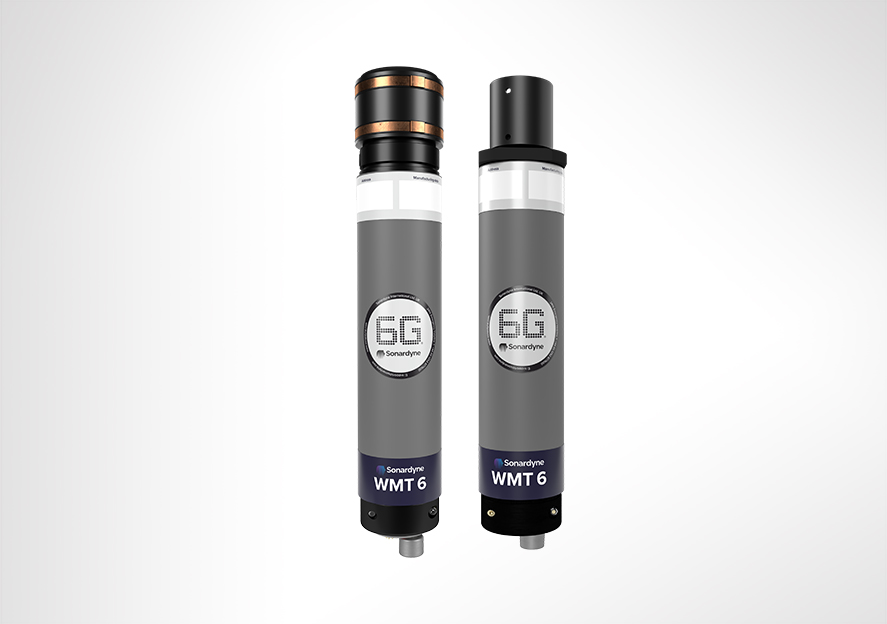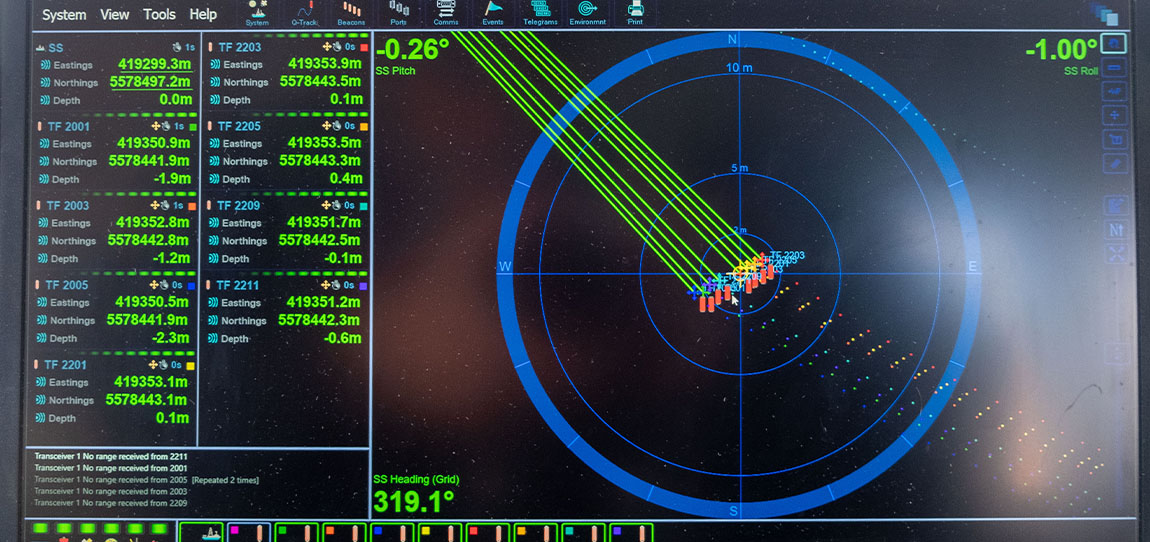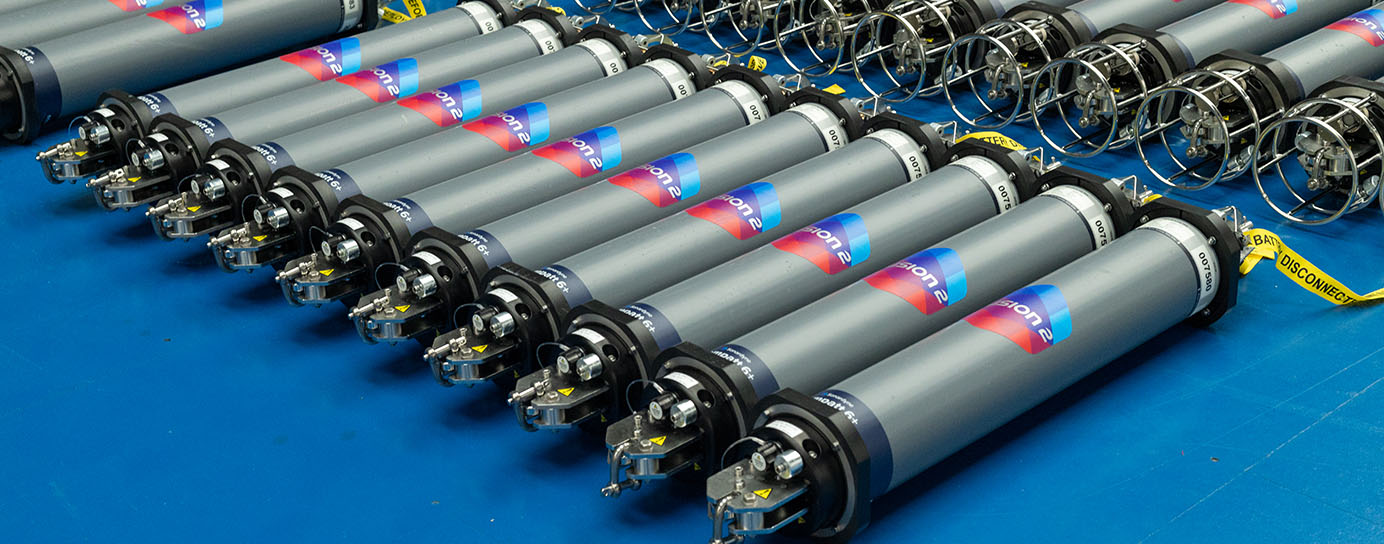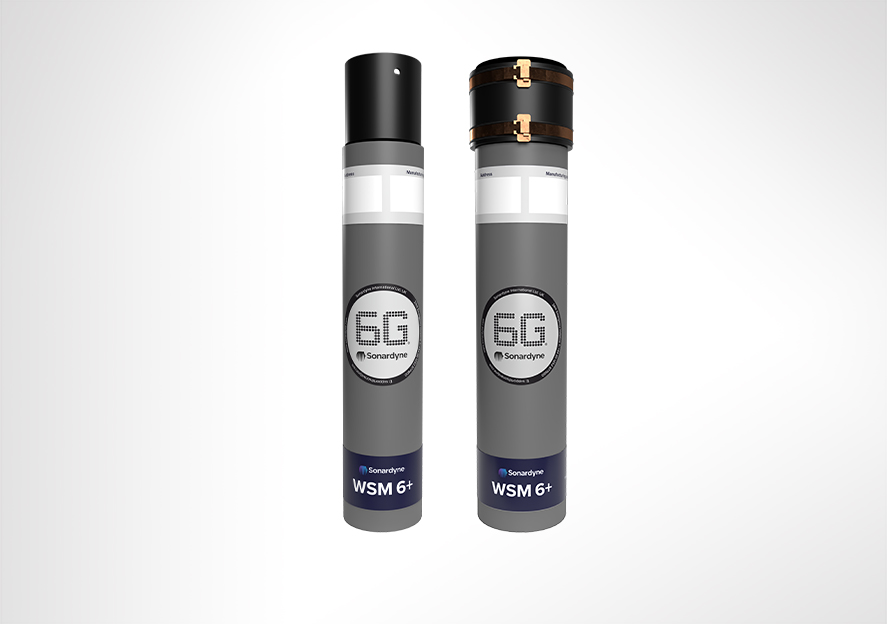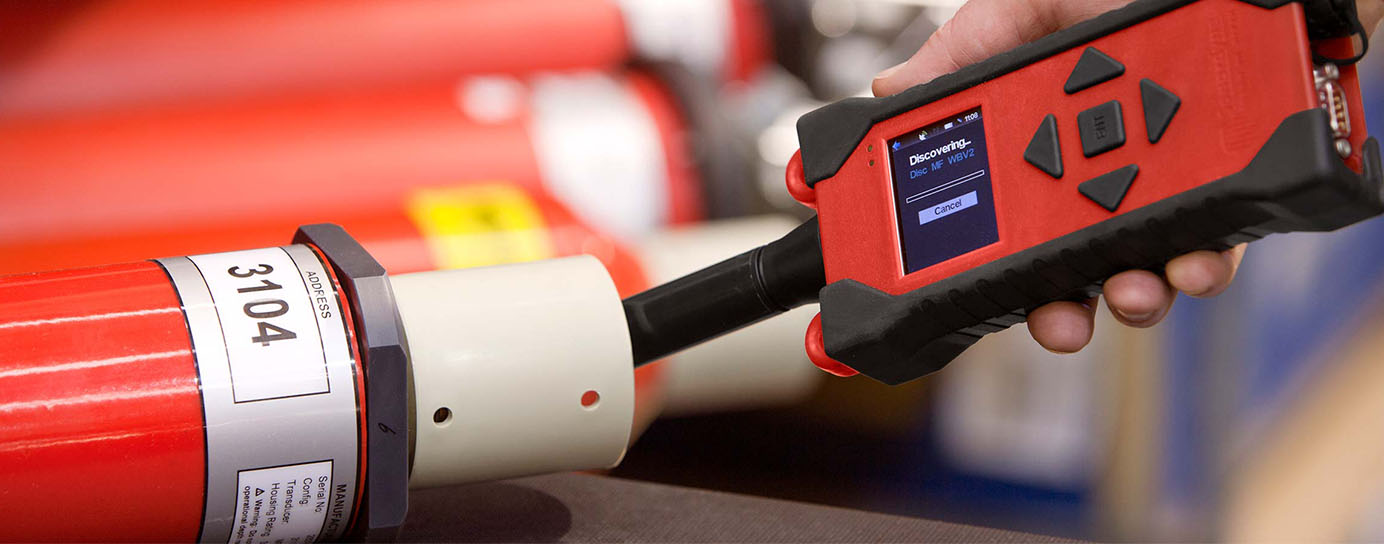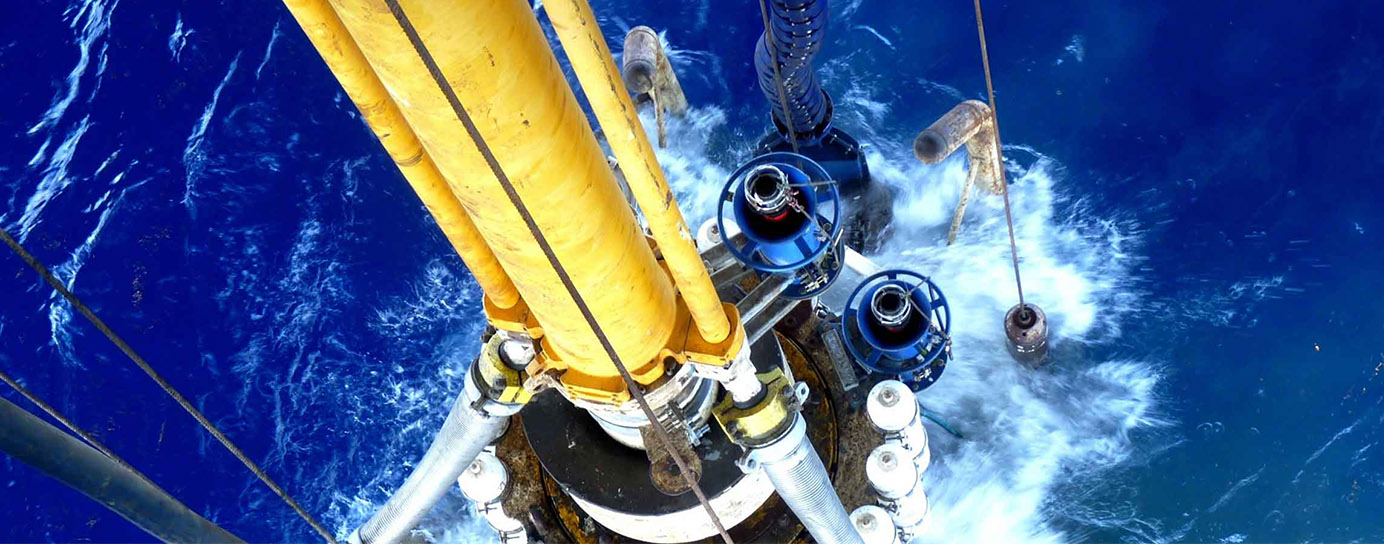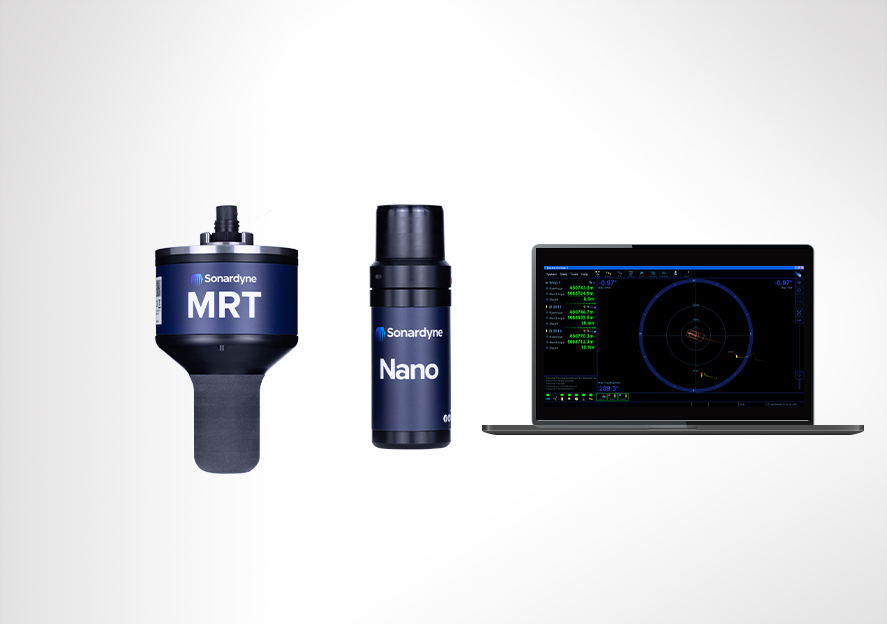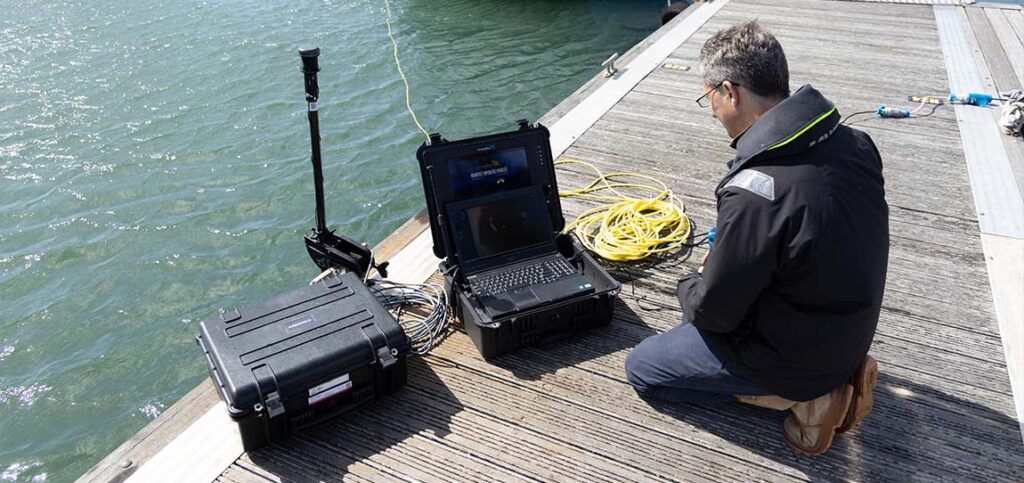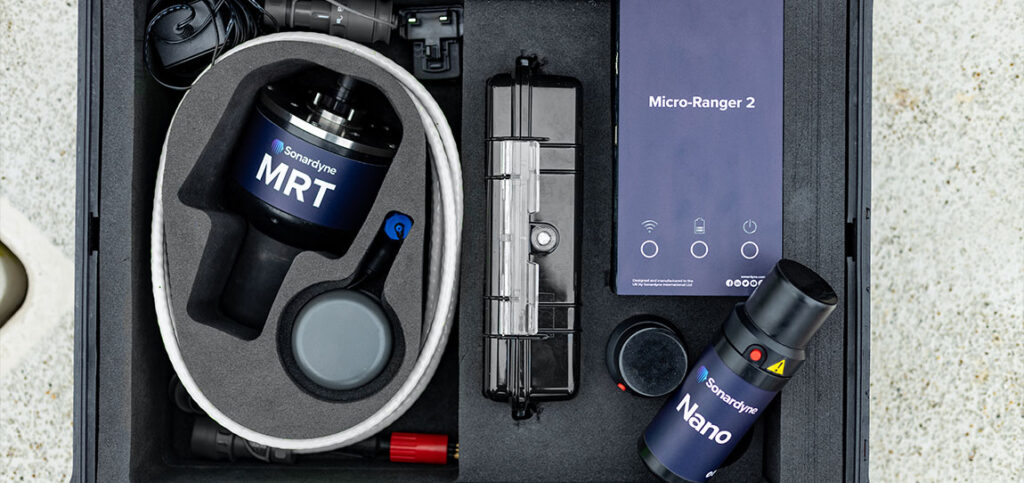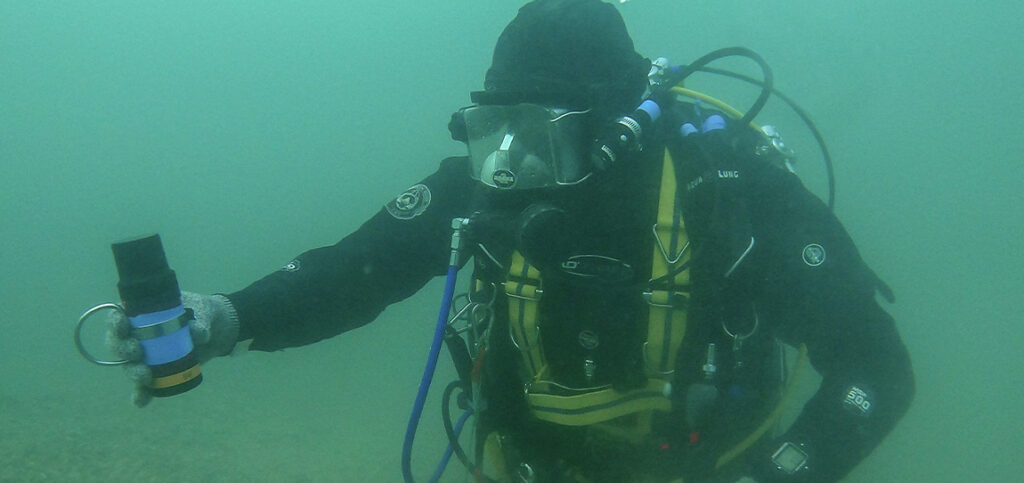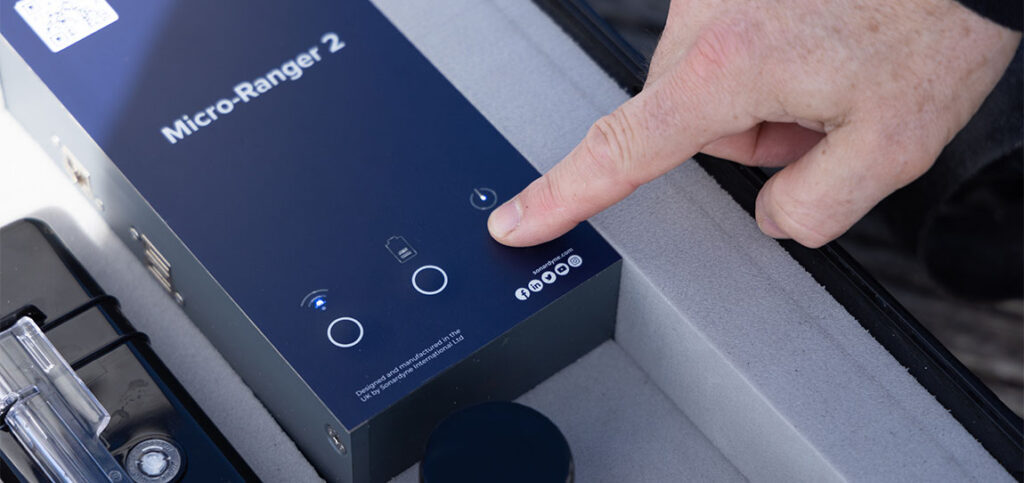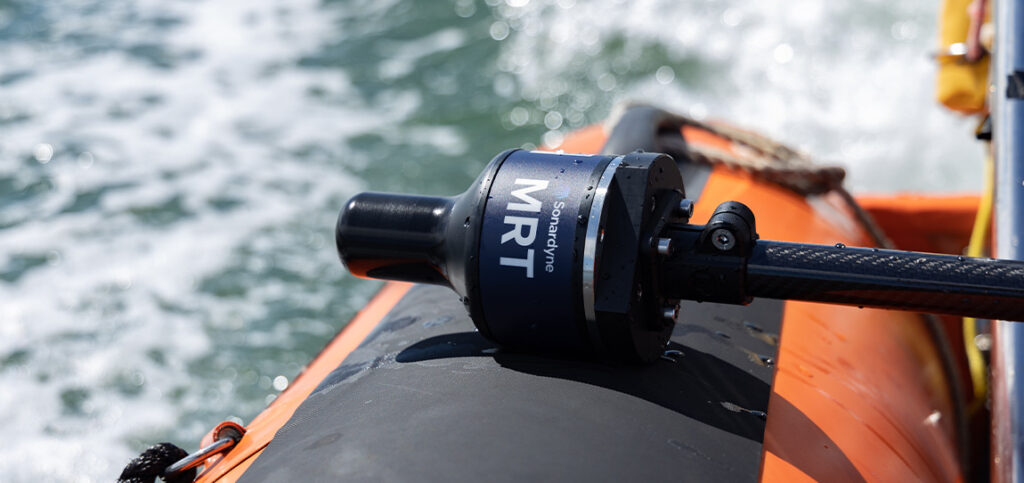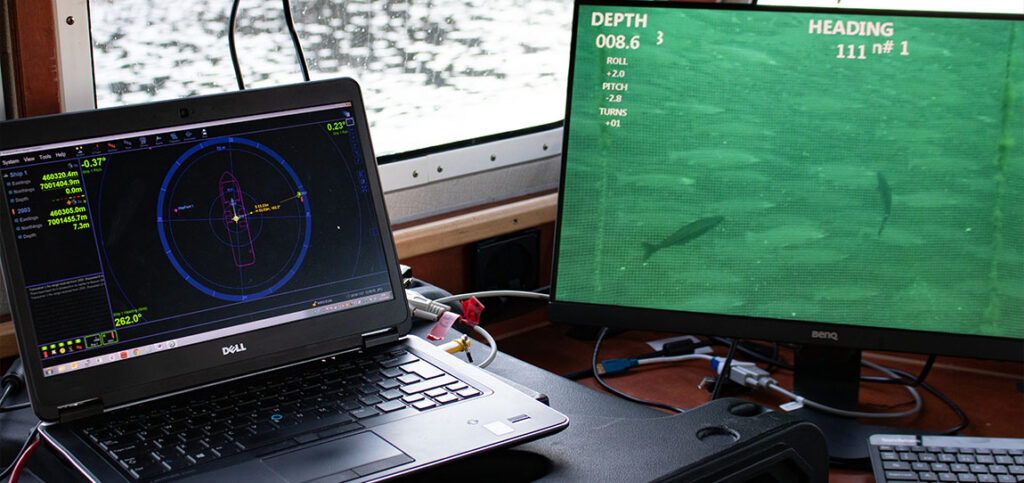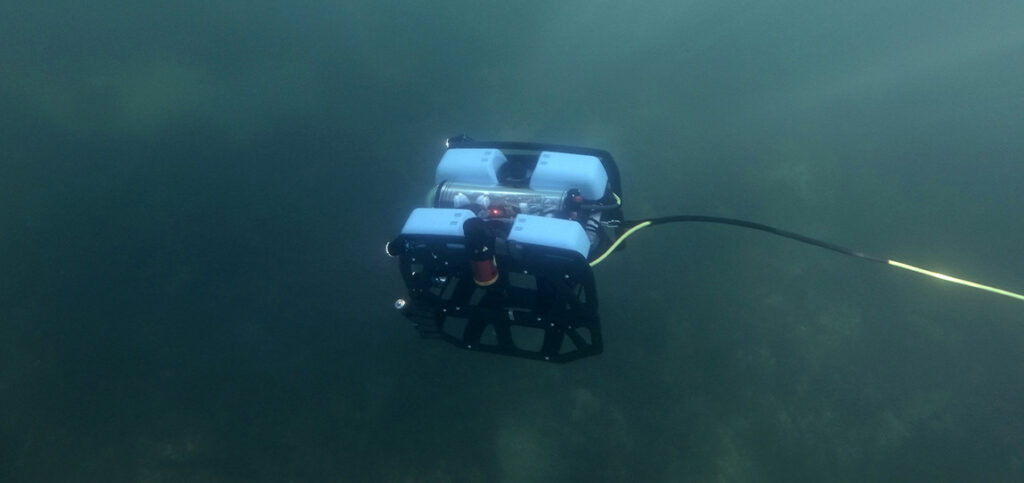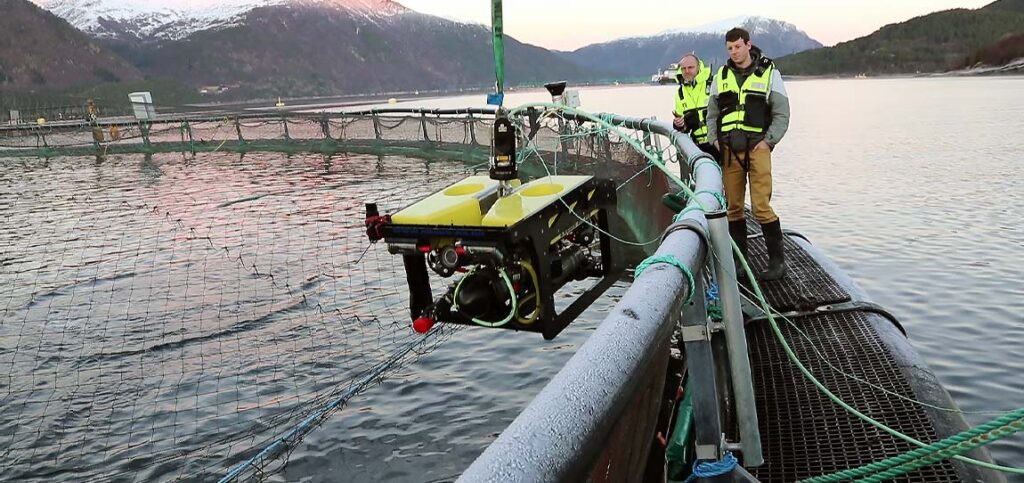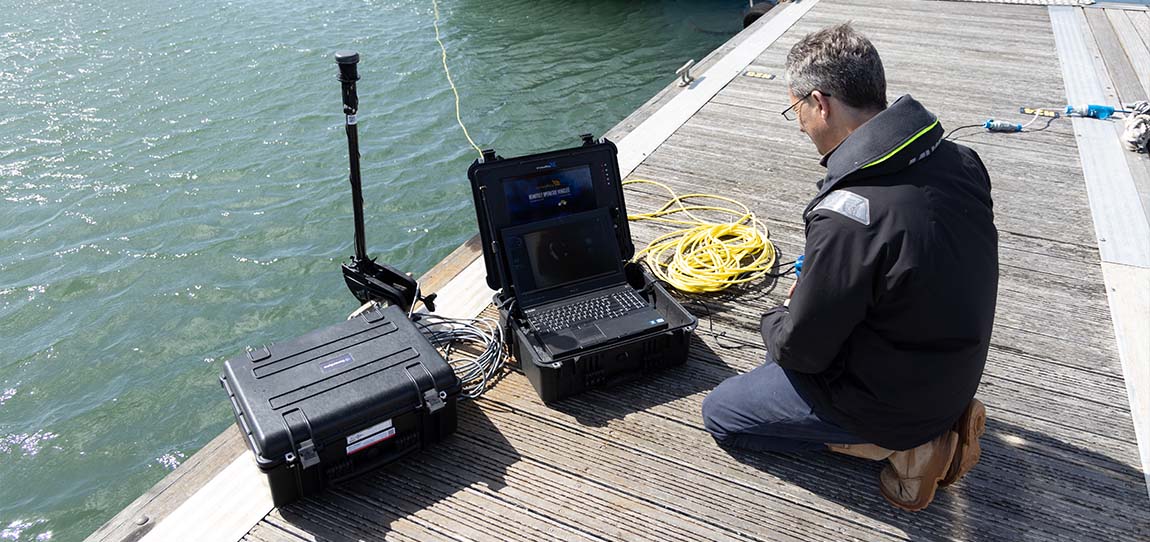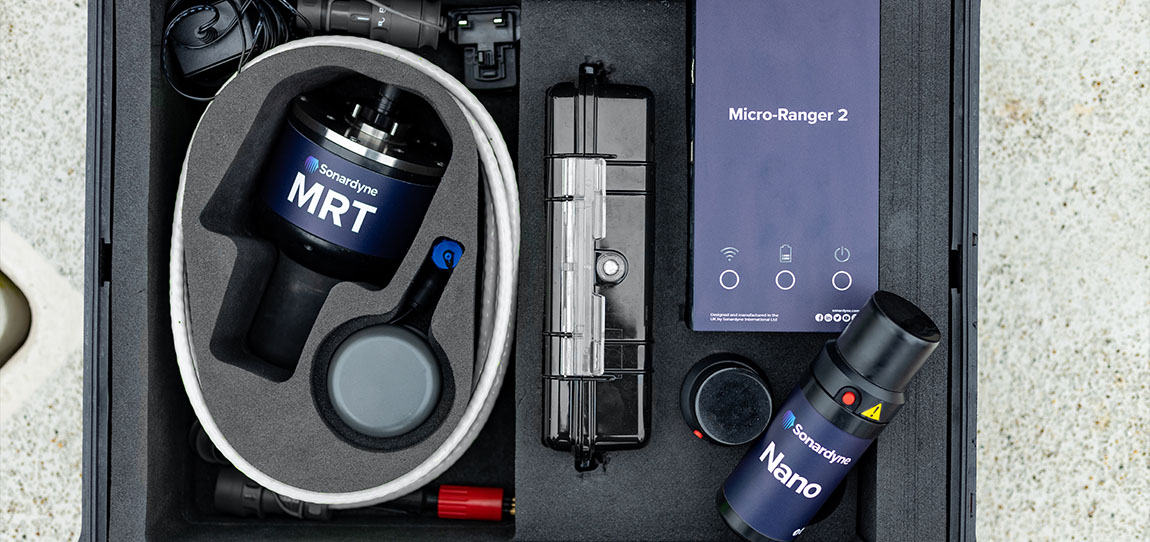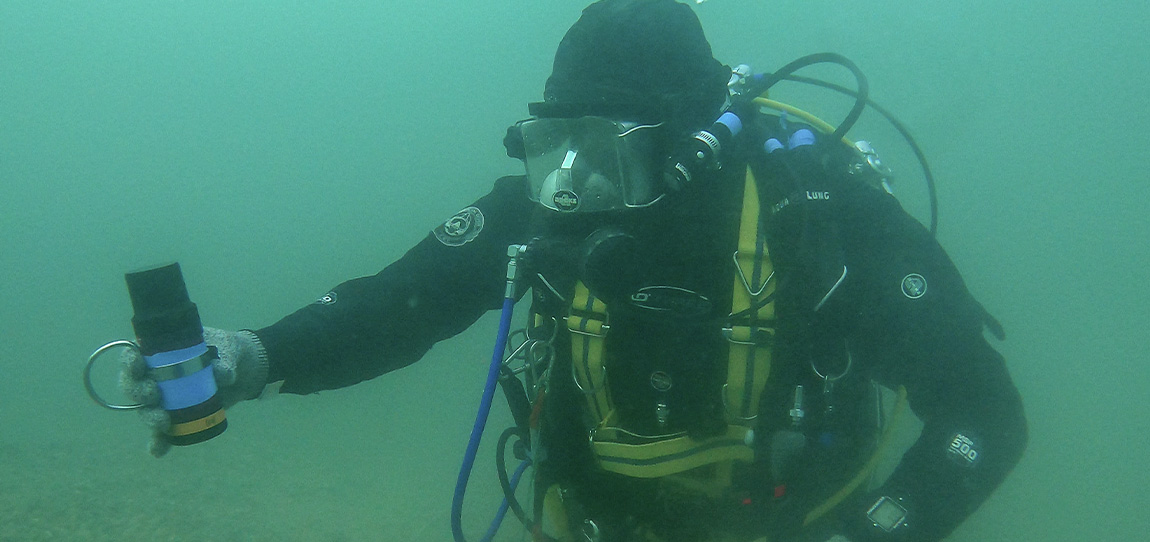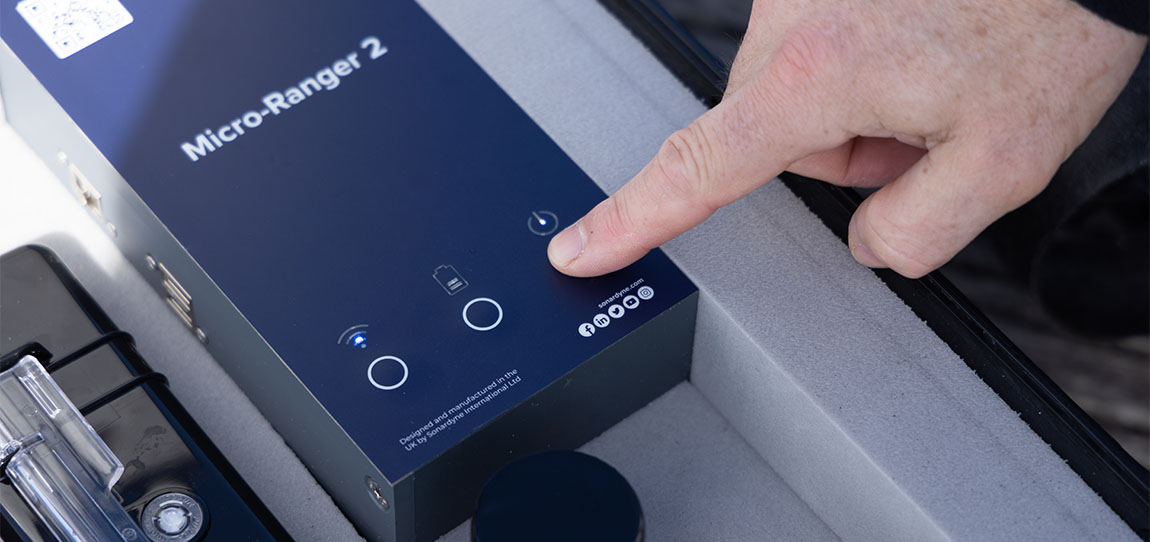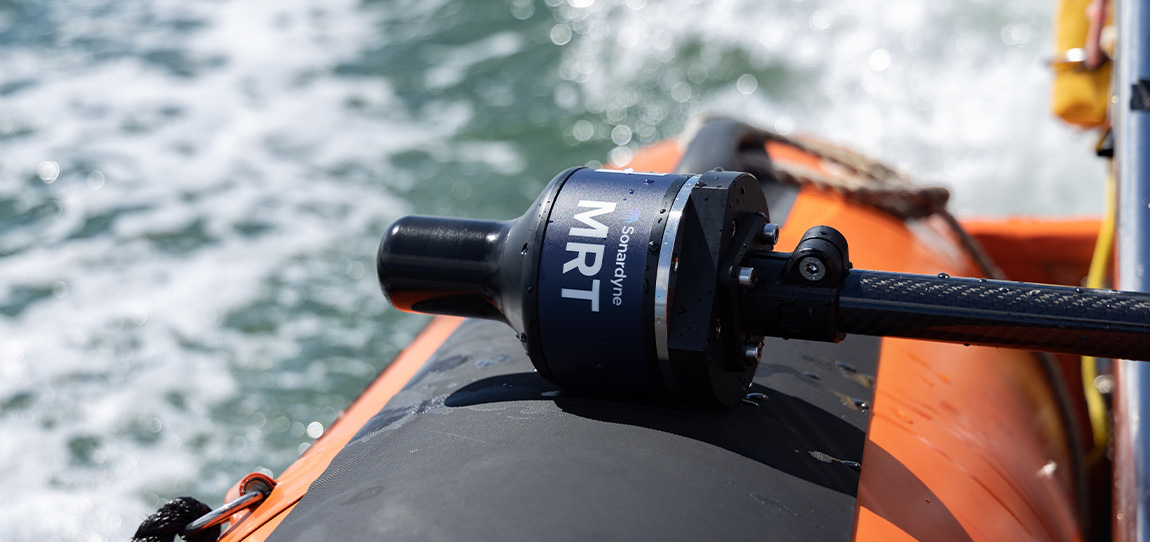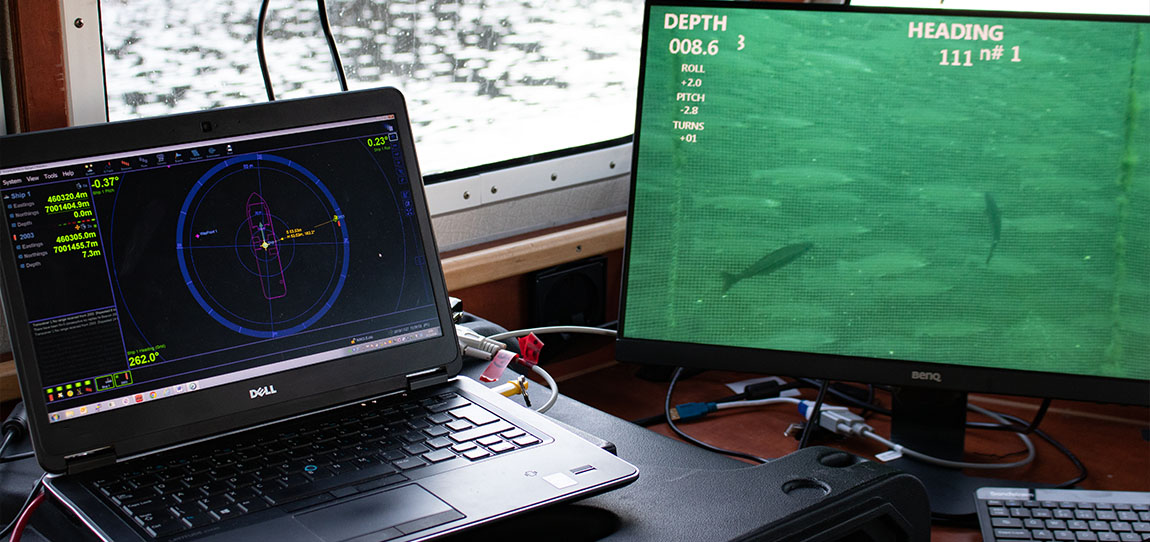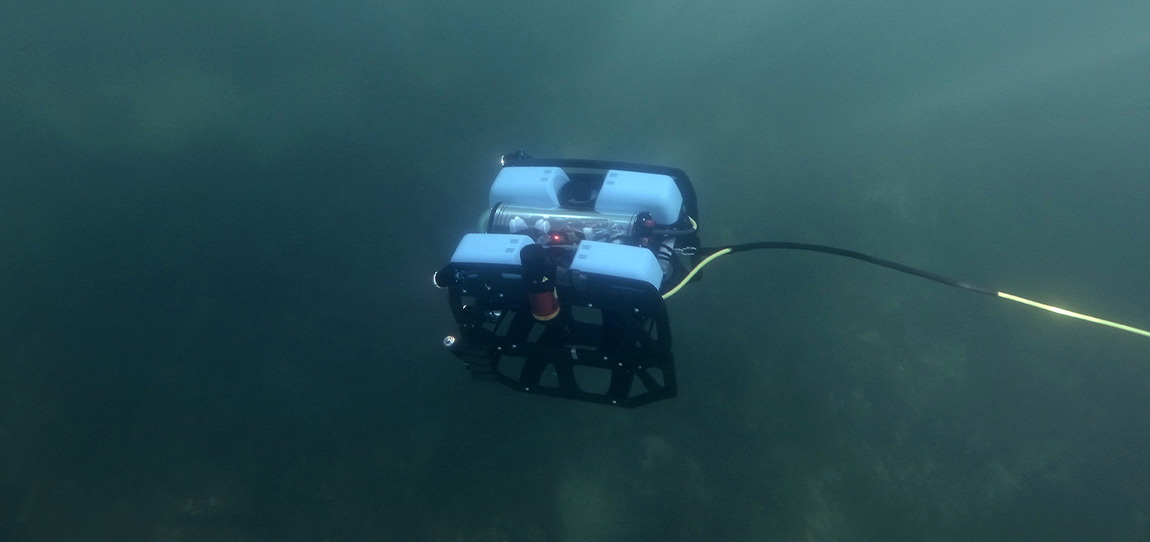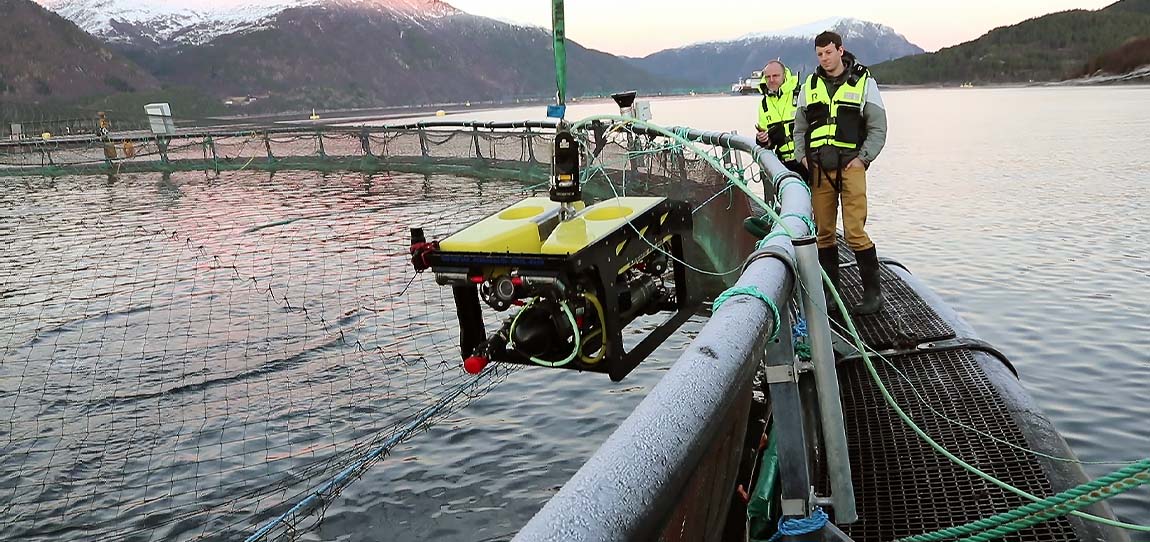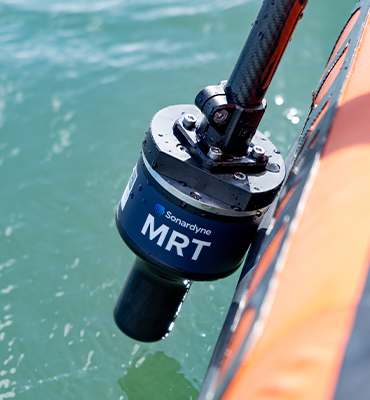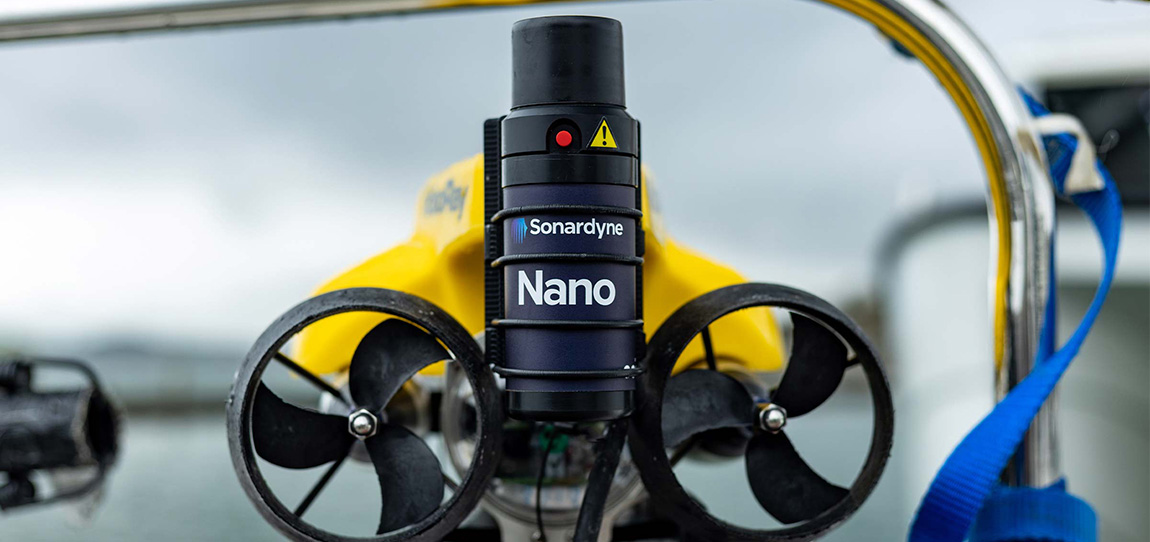Find out what's possible
SPRINT-Nav is a compact, all-in-one navigation tool for underwater and surface vehicles, integrating SPRINT INS, Syrinx DVL, and a high-accuracy pressure sensor. Available in four performance levels (300, 500, 700, and X) and two depth ratings (4,000 m and 6,000 m), it offers two DVL frequencies: 600 kHz and a high-altitude 400 kHz option.
Its Inertial Measurement Unit (IMU), featuring Honeywell ring laser gyros and accelerometers, works closely with the Syrinx DVL and a high-performance pressure sensor. This integration ensures unparalleled accuracy and reliability.
SPRINT-Nav saves time, costs, and payload space while offering unmatched performance and reliability for a wide range of subsea and surface vehicle applications.
Select the performance level right for your operation
- 300: Supports dual ROV and survey use, standalone ROV guidance and mid-water station keeping with vendor independent USBL aiding.
- 500/700: For more demanding applications, such as dynamic mobile mapping, this high-performing, survey-grade subsea INS is integrated with Sonardyne acoustics to provide you with the extra data functionality you need.
- X: Offers you exceptional navigational accuracy (<0.01% of total distance travelled) and ultimate suitability for long-endurance missions with XLUUVs, AUVs and USVs, making them viable alternatives to large, crewed vessels. The top-tier model for your specialised energy, defence and science operations.
Learn more about SPRINT-Nav
Echo Observer for Syrinx (EOS)
EOS is the software application for viewing, quality controlling, logging and exporting ADCP data from your SPRINT-Nav system. Compatible with Windows 7 or 10, it provides an intuitive interface to configure and monitor ADCP measurements and export data for analysis. EOS enables you to:
- Quickly set up and view profile data
- Export PD0 data as CSV files for further analysis
- Tailor exported data to match specific analysis needs
Why choose SPRINT-Nav?
SPRINT-Nav is the ultimate navigation solution for your autonomous subsea or surface vehicle operations. Calibration-free and packed with cutting-edge sensors, SPRINT-Nav combines INS, DVL, AHRS, and depth data into one compact unit. Available in 400 kHz and 600 kHz DVL options, as well as four performance levels, SPRINT-Nav ensures ultimate accuracy from deep water ROVs to shallow water USVs. Its detachable pressure sensor module allows for easy calibration and repair, while power-pass-through reduces cabling complexity. With dual algorithm capability for both ROV piloting and survey operations, SPRINT-Nav is the all-in-one navigation system you need to maximize productivity.
Built for
• Autonomous Underwater Vehicles (AUVs)
• Extra-Large Uncrewed Underwater Vehicles (XLUUVs)
• Uncrewed Surface Vehicles (USVs)
• Remotely Operated Vehicles (ROVs)
• SEAL Delivery Vehicles (SDVs)
Design
• 240 x 395 mm, 13.1 kg weight in water or 240 x 405 mm, 17.2 kg
• Titanium housing construction
• Provides concurrent AHRS and INS capability for dual use
• Onboard data storage and battery backup
• Individually water blocked and replaceable DVL transducers
• In field remote performance upgrades: Yes
Performance
• Heading accuracy 0.04° (secant latitude)
• 0.01° Pitch/Roll accuracy
• 0.02% Typical survey accuracy
• Station keeping <1m over 24 hours
• Provides bottom lock up to 230 m
Ownership
• Warranty: 1 year return to Sonardyne service centre
• ITAR Controlled: No
• UK Export License: Yes
• What’s in the box: SPRINT-Nav, mounting plate, Fusion 2 software, test lead and cable tail
Specifications
| Performance | SPRINT-Nav 300 | SPRINT-Nav 500 | SPRINT-Nav 700 | SPRINT-Nav X | |
|---|---|---|---|---|---|
| DVL aided | Typical survey | 0.04% | 0.02% | 0.01% | 0.01% |
| Distance from origin | 0.12% | 0.07% | 0.05% | Get in touch | |
| High Altitude option (HA) | 0.12% | 0.08% | 0.06% | Get in touch | |
| Unaided | 1.2 m in 60 s | 0.8 m in 60 s | 0.5 m in 60 s | Get in touch | |
| Altitude min/max | Standard | 0.4/175 m | 0.4/175 m | 0.4/175 m | 0.4/175 m |
| High Altitude option (HA) | 0.4/230 m | 0.4/230 m | 0.4/230 m | 0.4/230 m | |
| USBL and DVL aided | Precision improvement | Up to 7x better | Up to 10x better | Up to 13x better | Up to 13x better |
| Station keeping | <1 m over 24 hours | <1 m over 24 hours | <1 m over 24 hours | <1 m over 24 hours | |
| LBL/DVL aided | 3 cm confined area, 20 cm wide area (dynamic) | 3 cm confined area, 20 cm wide area (dynamic) | 3 cm confined area, 20 cm wide area (dynamic) | 3 cm confined area, 20 cm wide area (dynamic) | |
| INS/AHRS heading (Secant latitude) | INS | 0.05º | 0.04º | 0.02º | 0.01° |
| AHRS | 0.20º | 0.10º | 0.08º | 0.08° | |
| AHRS/INS roll and pitch | 0.01º | 0.01º | 0.01º | 0.01º | |
| Pressure sensor | 0.01% FS removable module | 0.01% FS removable module | 0.01% FS removable module | 0.01% FS removable module | |
| ADCP | Profiling range – 600 kHz |
0.4–80 m | 0.4–80 m | 0.4–80 m | 0.4–80 m |
| Profiling range – 400 kHz |
0.4–120 m | 0.4–120 m | 0.4–120 m | 0.4–120 m | |
| Vel. Range & RMS (Along Beam) – 600 kHz |
Up to ±5.6 m/s ±0.4% of measured value | Up to ±5.6 m/s ±0.4% of measured value | Up to ±5.6 m/s ±0.4% of measured value | Up to ±5.6 m/s ±0.4% of measured value | |
| Vel. range & RMS (along beam) – 400 kHz |
Up to ±8.4 m/s ±0.4% of measured value | Up to ±8.4 m/s ±0.4% of measured value | Up to ±8.4 m/s ±0.4% of measured value | Up to ±8.4 m/s ±0.4% of measured value | |
| Maximum number of cells | 255 | 255 | 255 | 255 | |
| Maximum ping rate | 4 Hz (ADCP) or 2.5 Hz (DVL+ADCP) | 4 Hz (ADCP) or 2.5 Hz (DVL+ADCP) | 4 Hz (ADCP) or 2.5 Hz (DVL+ADCP) | 4 Hz (ADCP) or 2.5 Hz (DVL+ADCP) | |
| Power requirements | DVL off | 20–50 V dc, 15 W nominal (35 W maximum) |
20–50 V dc, 15 W nominal (35 W maximum) |
20–50 V dc, 15 W nominal (35 W maximum) |
20–50 V dc, 15 W nominal (35 W maximum) |
| DVL on and battery fully charged | 20–50 V dc, 25 W nominal (35 W maximum) |
20–50 V dc, 25 W nominal (35 W maximum) |
20–50 V dc, 25 W nominal (35 W maximum) |
20–50 V dc, 25 W nominal (35 W maximum) |
|
| Internal battery backup | Li-ion/5 minutes | Li-ion/5 minutes | Li-ion/5 minutes | Li-ion/5 minutes | |
| Data storage | 8 GB internal memory | 8 GB internal memory | 8 GB internal memory | 8 GB internal memory | |
| Serial ports/protocol | 4x RS232 or RS485 | 4x RS232 or RS485 | 4x RS232 or RS485 | 4x RS232 or RS485 | |
| Other ports | Ethernet, 4x Triggers | Ethernet, 4x Triggers | Ethernet, 4x Triggers | Ethernet, 4x Triggers | |
| Mechanical construction | Titanium | Titanium | Titanium | Titanium | |
| Dimensions (diameter x height) (incl. connectors and mounting ring) |
4,000 m | 240 x 395 mm |
240 x 395 mm |
240 x 395 mm |
240 x 395 mm |
| 6,000 m | 240 x 405 mm |
240 x 405 mm |
240 x 405 mm |
240 x 405 mm |
|
| Weight air/water | 4,000 m | 23.9/13.1 kg | 23.9/13.1 kg | 23.9/13.1 kg | 23.9/13.1 kg |
| 6,000 m | 28.1/17.2 kg | 28.1/17.2 kg | 28.1/17.2 kg | 28.1/17.2 kg | |
| Depth rating | 4,000/ 6,000 m |
4,000/ 6,000 m |
4,000/ 6,000 m |
4,000/ 6,000 m |
|
| Operating temperature | -5 to 50°C | -5 to 50°C | -5 to 50°C | -5 to 50°C | |
| Storage temperature | -25 to 55°C | -25 to 55°C | -25 to 55°C | -25 to 55°C |
Frequently asked questions
What is PD0?
What is a SPRINT-Nav & hybrid navigation?
What is a DVL and how does it work?
SPRINT, SPRINT-Nav, Lodestar and Lodestar-Nav troubleshooting
How to use Fusion 2 LBL and INS dongles
What interference might I get between Syrinx DVL and the other acoustic equipment on my vehicle?
How sparse is a sparse LBL array?
What software and firmware is compatible with SPRINT and Fusion 2 Systems?
What DVL messages are supported?
What’s the difference between FOG and RLG?
What does Vehicle and IMU frame of reference mean?
SPRINT-Nav Maintenance Schedule
SPRINT-Nav Installation and Integration
ROV operational procedure for SPRINT-Nav
Is SPRINT-Nav export controlled?
Can you post-process SPRINT-Nav data?
Can I input an external depth sensor into SPRINT or SPRINT-Nav?
Does it matter where and how you mount a sound velocity sensor for use with a SPRINT-Nav or SPRNT-Nav Mini system?
Are SPRINT-Nav and SPRINT-Nav Mini swap-and-replace compatible?
Do I need to calibrate my SPRINT-Nav?
How do I calibrate my sparse LBL array?
How do I perform a SLAM calibration in Fusion 2?
How do I set up sound speed collection and pressure to depth conversion in Fusion 2?
How to connect a SPRINT-Nav in Fusion 2
STP files
Software and firmware
Software and control hardware
Top tips
Datasheets
Manuals and quick start guides
Navigate your marine environment with the confidence only SPRINT-Nav can provide.
Pinpoint location precision. Enhance your operations by adding valuable location detail enabling you to identify exactly where your data is drawn from or to pinpoint the location of assets, obstacles and pipelines.
Guide, control and navigate your USVs, ROVs and AUVs faster, safely and more efficiently with SPRINT-Nav. Operate your vehicles and vessels with the confidence of knowing exactly where they are and what they’re doing.
No calibration needed. Straight out of the box SPRINT-Nav is ready to go, saving you precious time on your operations.
Reduced in size – but not in performance, SPRINT-Nav Mini is the industry’s smallest all-in-one hybrid acoustic-inertial subsea navigator. It provides the perfect instrument for you to control your smaller inspection class ROVs and small to medium sized USVs.
Navigating – to hold station, SPRINT-Nav DP provides a reliable dynamic positioning reference in shallow water for your surface vessel to remain in one place without the need for a GNSS signal.
Engineered for all autonomous vehicles no matter what size or purpose, there is a SPRINT-Nav for your operations.
Why should you invest?
By choosing SPRINT-Nav you are choosing an all-in-one acoustic-inertial navigation sensor, replacing the need for a separate DVL, pressure sensor and INS/AHRS. Saving you the time, cost, cabling and integration challenges associated with using different sensors from different vendors.
At a glance
- Unique to Sonardyne
- Performance levels to suit your operations
- Tightly integrates raw acoustic, Doppler and inertial data
- Titanium housed for deep ROV missions
- Outputs altitude, depth, orientation and velocity
- Configure and control using a Web UI
Compact
Low power and small, it’s the ideal size for installing on all size ROVs as well as USVs undertaking data harvesting missions in shallow water and around offshore structures which often block GNSS signals.
Cost-effective
Because it’s cheaper than the four separate sensors it replaces (AHRS, DVL, INS and pressure sensor), it’s a cost-effective solution for your research platforms where budgets need to stretch as far as possible.
Specialist applications
SPRINT-Nav X is the highest-grade model in our SPRINT-Nav family designed for very specialist applications such as long endurance missions using XLUUVs.
Survey
Supports dual ROV and Survey use and standalone ROV guidance. Also provides mid-water station keeping with vendor independent USBL aiding.
Overview
Using a superfast processor to handle intensive workloads, Marine Computer is designed and configured to provide you with the best possible experience when using our suite of navigation, positioning and imaging software products, leaving you to concentrate on the job in hand.
However, you don’t have to be using Sonardyne software to use one. If you’re in the market for a robust and easily configured computer to run third-party software applications onboard your ship, survey boat or unmanned craft, Marine Computer is the perfect choice.
That’s because it’s certified to EN60945 and DNVGL-CG-0339 standards which means it meets regulatory requirements to be used on ships’ bridges and is able to withstand harsh operating environments and where constant high temperatures are present.
At a glance
- Choice of desktop or 2U rack mount configurations
- Fanless and temperature tolerant design withstands harsh marine operating environments
- Certified to EN 60945 and DNVGL-CG-0339 – use it on your bridge
- Intel 8th generation CPU runs intensive applications with ease
- Desk, console and rack mounting options
- Wide operating temperature range
Fanless computers like the Marine Computer are perfect for use in dirty or dusty marine environments where actively cooled systems could quickly clog up, overheat and fail. Inside is an Intel 8th generation processor and 512 GB industrial grade solid state disk. SSDs have no moving parts so are faster and more reliable than traditional hard disk drives. Temperature tolerant components contribute to its impressive wide operating temperature range.
All this makes the Marine Computer an extremely versatile and reliable tool in virtually any marine installation condition: desk mounted, in a small survey boat; within a ship’s bridge console; or, when supplied with a custom 2U chassis, mounted in a server room rack.
Watch our youtube video to learn more
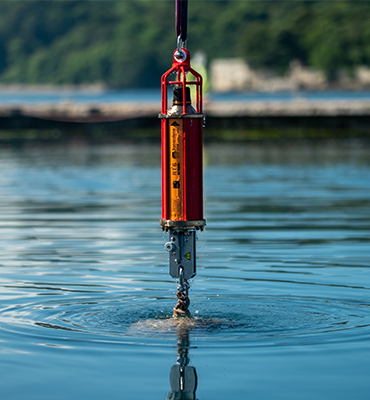
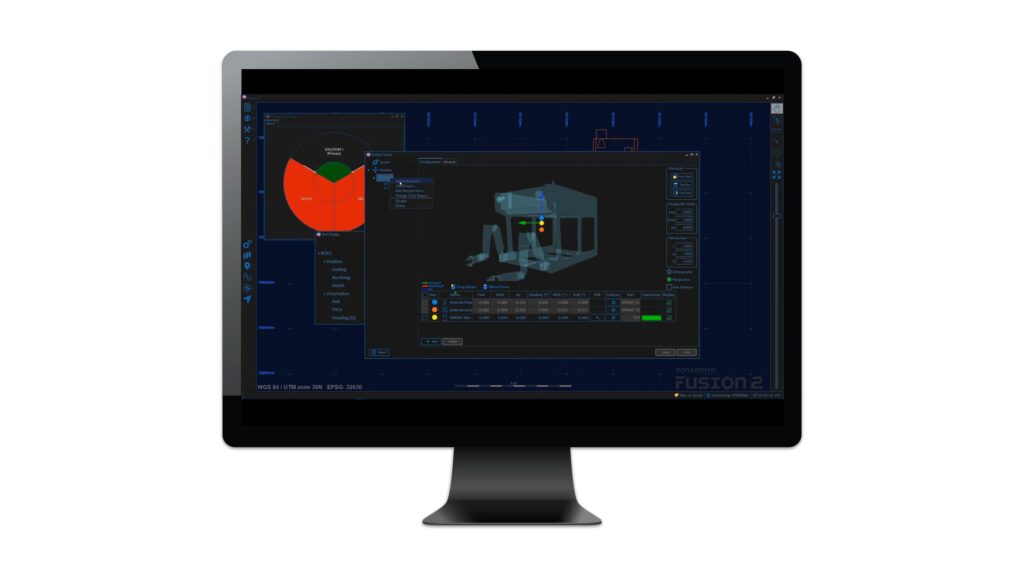
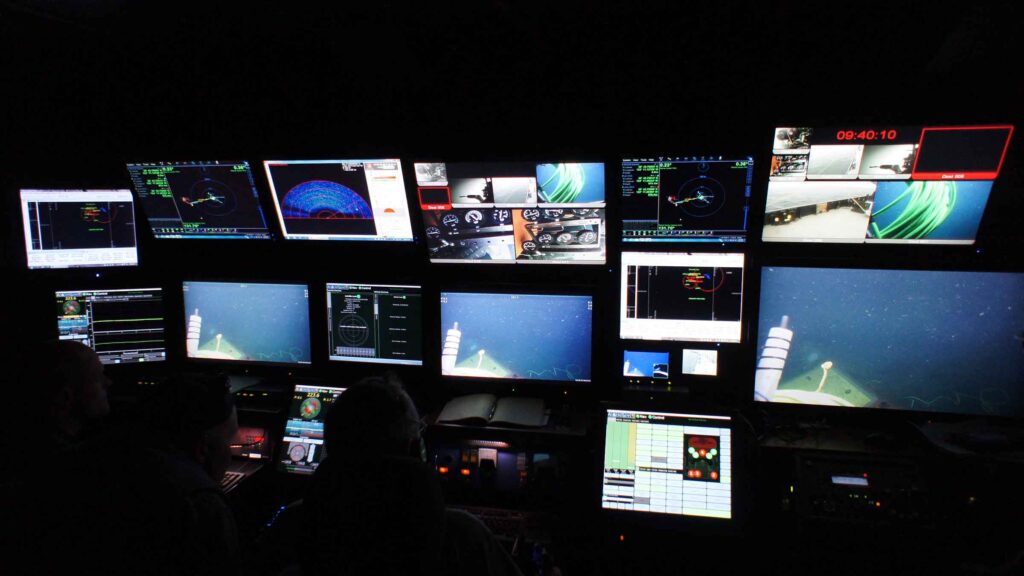
Specifications table
| Feature | Specification | |
|---|---|---|
| Processor | Intel i7 8700T Hexacore 2.4 GHz | |
| RAM | 8 GB 2666 MHz DDR4 RAM (non-ECC, un-buffered) |
|
| Hard drive | Single 512 GB industrial grade SSD | |
| Drives | Additional 2.5” SATA drive bay | |
| Ports | 1x DVI, 2 x DisplayPort 1.2, 2x USB 3.1 Gen2, 4x USB 3.0, 2x USB 2.0, 4 x RS232/422/485 serial ports (with auto flow control), 1x PS2 port, 1x Line in, 1x Mic in, 1x Phone jack 3.5mm, External Fan port, external power port, external reset port |
|
| Network | 2x 1 Gbps Ethernet | |
| Power in | Auto sensing ac voltage: 115/230 V, 60/50 Hz Max power input: 221 W Input current: 2 A @ 230 V |
|
| Audio | Realtek® ALC888 high definition audio | |
| Video | Supports triple independent display | |
| Environmental specifications | Operating temperature, storage temperature, relative humidity Vibration Shock |
-15 to 70ºC (5 to 158°F) -15 to 70ºC (5 to 158°F) 95% @ 70°C (non-condensing) 5 Grms, 5–500 Hz, 3 axes according to IEC60068-2-64 50 Grms, half-sine 11 ms duration according to IEC60068-2-27 |
| Intended use | Indoor use (including bridge), altitude up to 2,000 m, continuous operation | |
| EMC | Immunity & Emission EN 60945 & DNVGL-CG-0339 compliant |
|
| Dimensions (WxDxH) | Unmounted | 227 x 261 x 88 mm (8.9 x 10.3 x 3.5”) |
| Shelf mounted | 482 x 423 x 88 mm (19.0 x 16.7 x 3.5”) | |
| Weight | Unmounted | 4.3 kg |
| Shelf mounted | 10.5 kg | |
| Options | 265-5831 | 512 GB SSD |
| 650-0219 | Connector pack (1x dc power terminator, 1x SW reset terminator, 1x reset terminator, 1x fan terminator) |
Frequently asked questions
Datasheets
Manuals and quick start guides
Technical bulletin
Overview
SST 6 is a small rugged transponder designed to acoustically position of ocean bottom seismic cables and nodes, where high performance, small size, low cost and ease of programming are all important operational factors.
SST 6 incorporates our Wideband 2 digital acoustic signal processing architecture to deliver substantial performance gains over the previous generation SST, ensuring robust positioning performance in the most challenging of operational environments.
Innovations such as built-in, near field communications (NFC) technology, allow SST 6 transponders to be checked and programmed without human intervention, supporting operators’ vision for fully automated node handling and efficient back-deck ocean bottom seismic (OBS) operations.
At a glance
- Accurately positions seismic cables and nodes in water depths to 3,000 m
- Designed on 6G hardware and Wideband 2 technology platforms
- Compatible with Mini-Ranger and Ranger 2 USBL positioning systems
- Choice of depth ratings: 1,000 m or 3,000 m
- Over 1,520 unique acoustic transponder addresses supports large surveys
- Automated programming using NFC link without human intervention
SST 6 operates in the Medium Frequency (MF) band and is compatible with our Ranger 2 USBL systems. Ranger 2 USBL systems measure both range and bearing to SST 6 in the same operation, so an accurate position of the node or cable can be determined very quickly and at a high update rate.
Combining the use of Ranger 2 USBL and SST 6 in this way results in considerable savings in vessel time and new standards of efficiency for seismic operations.
NFC allows fast programming of 16 group interrogation addresses and 95 reply channels providing more than 1,520 unique acoustic identities.
This allows the marking of seismic cables and other applications demanding dense transponder coverage. SST 6 is configured using NFC with a suitable NFC-enabled handset (including NFC enabled Android™ handsets with the Sonardyne NFC App) or a dedicated HF radio frequency identification (RFID) reader.
The NFC link provides the ability to enter SST 6 into a storage mode when not in use, significantly increasing the overall battery endurance.
Specifications table
| Feature | Type 8325-1111 | Type 8325-3311 |
|---|---|---|
| Depth Rating | 1,000 m | 3,000 m |
| Operating Frequency | MF (20–34 kHz) | MF (20–34 kHz) |
| Transmit Source Level (re 1 µPa @ 1 m) | 187 dB | 187 dB |
| Battery Life | 9.5 Months | 9.5 Months |
| Operating Temperature | -5 to 40°C | -5 to 40°C |
| Storage Temperature | -20 to 55°C | -20 to 55°C |
| Dimensions (Length x Diameter) | 385 x 63 mm | 385 x 63 mm |
| Weight in Air/Water | 1.0/0.3 kg | 2.0/1.3 kg |
Frequently asked questions
STP files
Transponders
Datasheets
Manuals and quick start guides
Did you know?
SST 6 is compatible with Mini-Ranger and Ranger 2 USBL positioning systems
Overview
TZT is compact, simple to fit and easy to operate, making it the ideal choice for shallow-draft workboats, RHIBs and uncrewed surface vessels (USVs). Onboard, the splashproof (normally surface-mounted) transceiver electronics module is cable connected to your PC equipped with our HydroPos software (or third-party software) and remote acoustic transducer.
The remote transducer is normally attached to a rigid pole and deployed over the side of the craft you’re using. A GNSS receiver is typically attached to the top of the pole but, aside from that, there’s no need for any other ancillary equipment, such as a gyro or attitude and reference system, and the complexities that integrating them would involve.
At a glance
- Accurately positions your Sonardyne MF or HF seismic node and ocean bottom cable-mounted transponders
- Provides high-accuracy positioning right into the surf zone: <1 m water depth
- Designed for small work boats, RHIBs and USVs working in parallel with your node laying vessel
- Choice of frequencies depending on your transponder inventory: HF for Type 7815s or MF for SST 6s
On command from your PC, the TZ Transceiver acoustically interrogates up to nine TZ/OBC transponder or up to 95 SST 6 transponders at a time and the acoustic responses are used to generate range measurements to each of them.
By combining the many acoustic range measurements made to each transponder, with GNSS data input into HydroPos, it is possible to generate accurate positions of all transponders to better than 1 m absolute precision.
Mounting TZT onto a USV unlocks the opportunity to reduce the risk, cost and environmental impact of your surveys by reducing the number of crewed vessels required to support your survey.
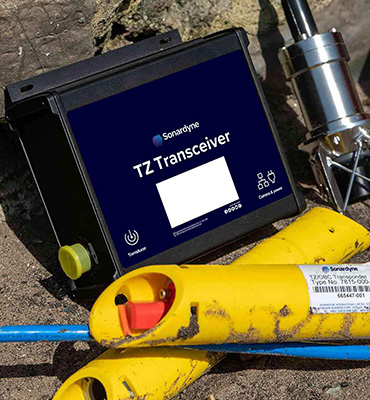
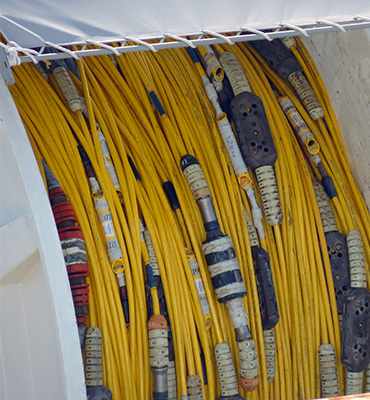
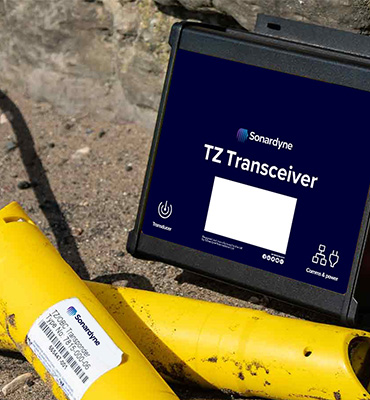
Specifications table
| Feature | Type 8263-010-0021 | Type 8263-010-0022 |
|---|---|---|
| Operating Frequency | HF (35–50 kHz) | MF (20–34 kHz) |
| Transmit Source Level (dB re 1 µPa @ 1 m) | >184–186 dB | >184-187 dB |
| Receive Sensitivity (dB re 1 µPa) | <90 dB | <90 dB |
| Ranging Precision | Better than 0.5 m | Better than 15 mm |
| Addresses | 401 | 1520 |
| Power | 28 V dc, maximum 2 A | 28 V dc, maximum 2 A |
| Communications | RS232/RS485 @ 9,600 to 115,200 baud, Ethernet | RS232/RS485 @ 9,600 to 115,200 baud, Ethernet |
| Mechanical Construction | Aluminium alloy | Aluminium alloy |
| Operating Temperature | -5 to +50°C | -5 to +50°C |
| Storage Temperature | -20 to +70°C | -20 to +70°C |
| Dimensions (Length x Width x Height) | 223 x 220 x 91 mm | 223 x 220 x 91 mm |
| Weight | 3 kg | 3 kg |
| Feature | Remote Transducer HF | Remote Transducer MF |
| Operating Frequency | HF (35–50 kHz) | MF (20–34 kHz) |
| Depth Rating (Acoustic Transducer) | 100 m | 100 m |
| Cable Length | 20 m | 20 m |
| Mechanical Construction | Stainless steel | Stainless steel |
| Dimensions (Diameter x Length) | 90 x 211 mm (without cable) | 90 x 211 mm (without cable) |
| Weight in Air | 3.7 kg (without cable) | 3.7 kg (without cable) |
Did you know?
TZT is suitable for USVs and seismic surveys
Overview
Prior to deployment from a cable lay boat, the transponders are attached to the seismic cable at each ground station, typically every 50 metres. Once the bottom cable is laid, the acoustic system measures the ranges from the surface transceiver to the transponders to enable their exact positions to be established. This positioning process can either be conducted while laying the cable or later while shooting.
The transponders are small and lightweight and have been proven to be able to withstand the demanding and varied operational environment of OBC and TZ surveys.
At a glance
- Use it to position OBS cables in water depths up to 500 metres
- Built to withstand rugged operational environments
- Thousands of unique acoustic addresses
- Up to 18 months’ listening life
- Optional RFID tag for easy asset tracking
Standard features include a depth rating of 500 metres, a unique acoustic ‘address’ enabling thousands of units to be laid in a single deployment and automatic battery voltage monitoring to allow users to better plan their maintenance schedules.
In OBC operations using a ‘squirter’ cable deployment system, ‘carapaces’ are available that provide a fast and secure means of attaching transponders to the cable. The carapaces are manufactured from tough plastic that encapsulates the transponder and optional RFID asset tracking tag, clamping it securely to the cable whilst protecting it from the high cable deployment and recovery speeds.
The carapace design, which is now in use with many crews around the world, has been proven to be easy to fit and reduces long term maintenance when compared with traditional tie-wrap and tape methods. The low profile shape of the carapace also reduces the risk of snagging and as it is acoustically ‘quieter’ in the water, creating less noise interference down the cable.
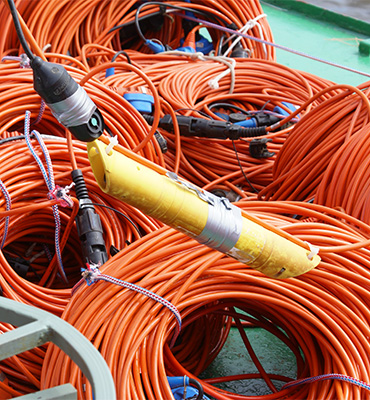
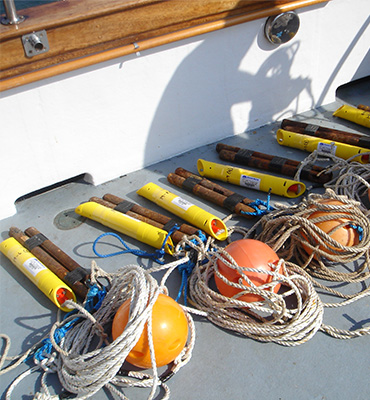
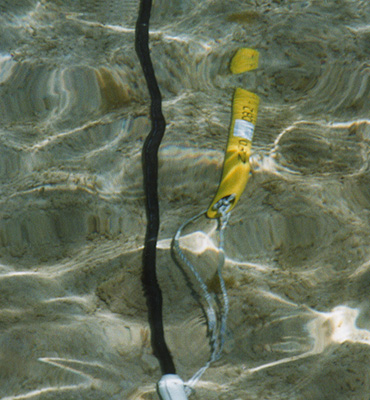
Specifications table
| Feature | Type 8365-0001 | Type 8365-0002 |
|---|---|---|
| RFID Tag | No | Yes |
| Depth Rating | 500 m | 500 m |
| Operating Frequency | HF (33–50 kHz) | HF (33–50 kHz) |
| Transmit Source Level (dB re 1 µPa @ 1 m) | 184–187 dB | 184–187 dB |
| Receive Sensitivity (dB re 1 µPa) | 105–115 dB | 105–115 dB |
| Number of Unique Addresses | 3609 (field programmable) | 3609 (field programmable) |
| Battery Life (Alkaline) | 18 months | 18 months |
| Mechanical Construction | Anodised aluminium alloy and plastic | Anodised aluminium alloy and plastic |
| Operating Temperature | -5 to +40°C | -5 to +40°C |
| Storage Temperature | -20 to +55°C | -20 to +55°C |
| Dimensions (Length x Diameter) | 433 x 63 mm | 433 x 63 mm |
| Weight in Air/Water | 1.1/0.2 kg | 1.1/0.2 kg |
| Deck Unit | Type 7967-000-02 (includes transducer and 10 m of cable) | Type 7967-000-02 (includes transducer and 10 m of cable) |
Frequently asked questions
Manuals and quick start guides
Did you know?
TZ transponder is part of our TZ OBC system
Overview
WMT is a 6G compatible, high acoustic output power USBL transponder available in two depth versions: 3,000 m and 7,000 m. The 7,000 m version has a higher acoustic output power level for improved long-range operation.
For ROV and towfish tracking, WMT supports responder trigger for faster position updates, an integrated rechargeable Li-Ion battery pack that is charged from the ROV’s power supply and full RS232 communications enabling channel set up, power and gain etc. to be changed from the surface.
At a glance
- Use it with Ranger 2 for deep water, long layback tracking tasks
- High power acoustic output and directional transducer
- Responder mode for fast position updates
- Full two-way Sonardyne Wideband 2 interrogation and reply
- Li-Ion rechargeable battery pack
- Optional remote transducer
An on/off switch (3,000 m only) helps to ensure the battery pack is not discharged when not in use. If an umbilical trigger is not available, then the full Wideband transponder mode provides excellent USBL performance in a small, lightweight package.
Remote omni or directional transducers are available for WMT. These make installation on a ROV easier as the remote transducer can be installed where there is good line-of-sight and is easily replaced if damaged. The main body of the transponder can then be installed within the ROV frame where it is well protected from damage.
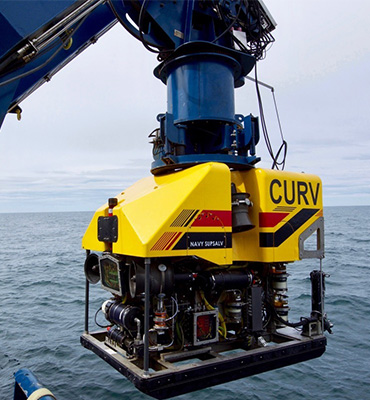
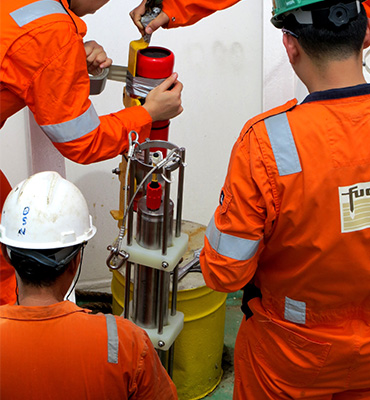
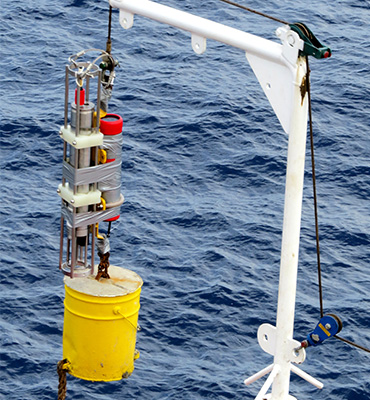
Specifications table
| Feature | Type 8190-3111 | Type 8190-3112 | Type 8190-7212 | |
|---|---|---|---|---|
| Depth Rating | 3,000 m | 3,000 m | 7,000 m | |
| Operating Frequency | MF (20–34 kHz) | MF (20–34 kHz) | MF (20–34 kHz) | |
| Transducer Beam Shape | Omni-directional | Directional | Directional | |
| Source Level (re 1 µPa @ 1 m) |
High Power | 187 dB | 193 dB | 199 dB |
| Low Power | 181 dB | 187 dB | 193 dB | |
| Tone Equivalent Energy (TEE) WBv2+ |
High Power | 193 dB | 199 dB | 205 dB |
| Low Power | 187 dB | 193 dB | 199 dB | |
| Range Precision | Better than 15 mm | Better than 15 mm | Better than 15 mm | |
| Depth Sensor | ± 0.5% full scale | ± 0.5% full scale | ± 0.5% full scale | |
| Communications Interface | RS232 (9,600–115,200 baud) | RS232 (9,600–115,200 baud) | RS232 (9,600–115,200 baud) | |
| External Supply Voltage | 24 or 48 V dc (± 10%) | 24 or 48 V dc (± 10%) | 24 or 48 V dc (± 10%) | |
| External Power | Sleep | ~650 mW | ~650 mW | ~650 mW |
| Wideband Listening | ~1 W | ~1 W | ~1 W | |
| Battery Charging | 6 W | 6 W | 6 W | |
| Peak (During Transmission) |
<50 W | <50 W | <50 W | |
| External Power Switch | Yes | Yes | No | |
| Battery Life (Li-ion 15 V) |
Listening | 30 days | 30 days | 30 days |
| Continuous 5 Seconds Interrogation |
Approx. 6 days at low power | Approx. 6 days at low power | Approx. 6 days at low power | |
| Mechanical Construction | Anodised aluminium alloy and plastics | Anodised aluminium alloy and plastics | Anodised aluminium alloy and plastics | |
| Operating Temperature | -5 to 40°C | -5 to 40°C | -5 to 40°C | |
| Storage Temperature | -20 to 55°C | -20 to 55°C | -20 to 55°C | |
| Dimensions (Diameter x Length) | 94 x 501 mm | 94 x 513 mm | 98 x 513 mm | |
| Weights in Air/Water | 5.1/2.2 kg | 7.0/3.5 kg | 7.0/3.5 kg | |
| Options | Remote, Cable Connected Transducer (see separate datasheet) |
Remote, Cable Connected Transducer (see separate datasheet) |
None |
Frequently asked questions
Software and firmware
Software and control hardware
Datasheets
Manuals and quick start guides
Technical bulletin
Did you know?
WMT is used with Ranger 2 USBL for tracking and communications
Overview
WSM 6+ is one our most popular USBL transponders, selected by customers for its small size, value and dependable performance in all environments, shallow or deep.
It’s the perfect choice for fitting to observation and work-class ROVs, towfish, submersibles and equipment being deployed onto the seabed for short durations.
WSM 6+ is compatible with all of our Ranger 2 USBL systems and we even include one with every Ranger 2 Standard – as standard.
The compact and rugged design is based on the field proven mechanics from previous generation designs and is available with omni-directional or directional transducers. The omni version is depth rated to 1,000 m and the directional is depth rated to 4,000 m.
At a glance
- Rechargeable USBL transponder designed for tracking ROVs, towfish and equipment
- Choice of 1,000 m (omni-directional) and 4,000 m (directional) depth ratings
- Compatible with our family of Ranger 2 USBL systems: Micro, Mini and Standard
- Transponder or responder operating modes
- Depth sensor for improved USBL positioning performance
- External on/off switch for battery saving
Both versions support transponder and responder operating mode if an external trigger from your platform is available. Responder mode provides significantly faster position updates than transponder mode.
WSM 6+ supports Wideband 2 acoustic signals and legacy Wideband 1 and HPR 400. The configuration is programmable using supplied software and a serial link or it can be configured acoustically via our back deck handheld test unit – iWand. This allows the WSM 6+ to be configured for use with all of the popular MF frequency acoustic navigation systems.
Both types of WSM 6+ are also fitted with a depth sensor fitted as standard to aid USBL positioning accuracy and an external on/off switch to save battery power when not in use.
WSM 6+ variants are available with acoustically controlled output lines suitable for external motor drive, burnwire or contact closure releases.
Watch our youtube video to learn more
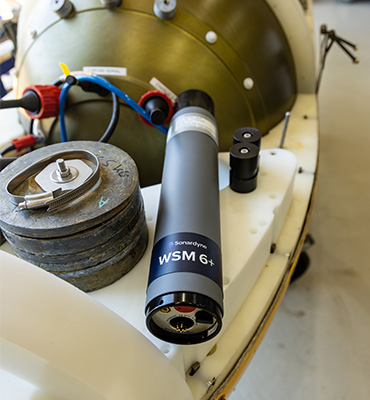
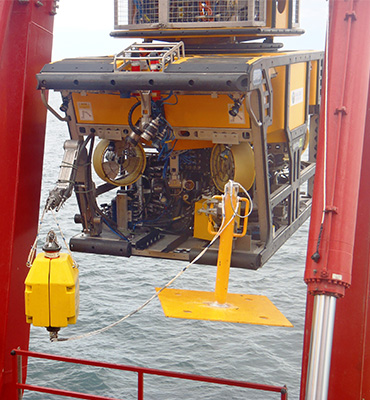
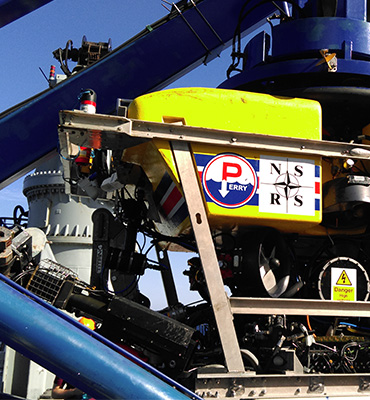
Specifications table
| Feature | Type 8370-1111 | Type 8370-4112 |
|---|---|---|
| Depth rating | 1,000 m | 4,000 m |
| Operational frequency | MF (20–34 kHz) | MF (20–34 kHz) |
| Transceiver beam shape | Omni-Directional | Directional |
| Transmit source level (dB re. 1 µPa @ 1 m) (external power/battery) | 187 dB/ 184 dB |
196 dB/ 193 dB |
| Tone Equivalent Energy (TEE) (external power) | 193 dB | 202 dB |
| Receive Sensitivity (dB re 1 μPa) | <85 dB | <80 dB |
| Power supply | Rechargeable NiMH battery or ext. 24 V via ROV umbilical | Rechargeable NiMH battery or ext. 24 V via ROV umbilical |
| Operating channels | All Sonardyne Wideband HPR 400 Channels | All Sonardyne Wideband HPR 400 Channels |
| Depth sensor | ±0.5% Full Scale (100 Bar) | ±0.5% Full Scale (400 Bar) |
| Operating life (1 s update rate, max. power, Wideband 2 ) |
>6 days | >3 days |
| Update rate (maximum) | >2 Hz | >2 Hz |
| Quiescent life (battery) | >35 Days | >35 Days |
| Connector (5-Way (standard)/ 8-Way (burnwire/motor release)) |
Subconn MCBH5M/ Subconn MCBH8F |
Subconn MCBH5M/ Subconn MCBH8F |
| Operating temperature | -5 to 40ºC | -5 to 40ºC |
| Storage temperature | -20 to 55ºC | -20 to 55ºC |
| Mechanical construction | Anodised aluminium alloy | Anodised aluminium alloy |
| Dimensions (length x diameter) | 420 x 75 mm | 429 x 96.5 mm |
| Weight in air/water | 3.2/1.3 Kg | 5.5/3.2Kg |
| Battery charger | 8370-011-01 | 8370-011-01 |
Frequently asked questions
STP files
Software and firmware
Software and control hardware
Transponders
Datasheets
Manuals and quick start guides
Technical bulletin
Did you know?
WSM 6+ is compatible with our Ranger 2 family of USBL systems: Micro, Mini and Standard
Maximum efficiency with the best value underwater tracking system on the market
It’s built on the same tried and tested cutting-edge hardware and digital acoustic technology found in the rest of our Ranger USBL family, so you can expect unrivalled performance without the complexity or cost. Its robust and compact format is ideal for your shallow coastal water and inland waterway operations thanks to its ultra-portable design. Track your divers and autonomous underwater vehicles at up to 995 m range.
Whether you’re a first-time user of USBL technology or a seasoned professional, you’ll find Micro-Ranger 2 incredibly easy to use – it’s a one box solution, make a few simple connections and your operation is ready to go!
We’ve engineered everything to fit in a robust carry case. Apart from your laptop to run the software, nothing else is needed and it’s so compact you can carry it on a plane. A built-in battery provides more than 10 hours of continuous use, enough for a full day of activity out on the water. The case can also take external power from a boat or shore supply.
Why choose it?
- Portable, everything you need comes in one box
- Quick to connect up and deploy
- Easy to use, no training needed
- Shares common platform with other Sonardyne USBLs
- Light and compact, attach to divers and small vessels without restricting their operations
- Developed and supported by a company with over 50 years of experience in innovative underwater technology
The kit
Transceivers
Ideal for tracking targets in shallow water up to the surface, the omni-directional acoustic tracking transceiver (MRT) is small and light enough to deploy on its cable from a pontoon, over the side of a vessel or on the sensor spar of a USV.
Micro-Ranger 2 software has many of the innovative features from our other larger Ranger 2 USBL systems to ensure you have everything you need to track underwater targets.
If your operations need to track and communicate with small AUVs or subsea drones, an optional Marine Robotics feature pack is available.
Transponders
What every diver, small towfish and micro ROV / AUV should be wearing, our Nano transponders are the perfect size and weight for tracking your important assets in shallow water without interfering with their movement. The two you will receive with Micro-Ranger 2 are second generation units offering extended battery life and depth rating. A connector-equipped Nano is also available allowing it to operate continuously via an external power source.
Simply choose the type of Nano transponder to suit your operation at the time of ordering. Micro-Ranger 2 can also be used with other Sonardyne 6G transponders including WSM 6+ and WMT.
Integrator/Marine robotics kit
If your operation needs you to both track and communicate with targets, the Micro-Ranger 2 integrator system kit is available. It comes complete with our add-on Marine Robotics software pack and AvTrak 6 Nano, which support two-way messaging, vehicle control and tracking in one small instrument.
Micro-Ranger 2 and MSDS Marine
Performance
• Up 10 targets tracked, sequentially
• 995 m maximum tracking range
• 3 Hz position update rate
• Up to 5% of slant range system accuracy
Acoustics
• MF frequency (20–34 kHz)
• Omni-directional coverage for wide area tracking
• Sonardyne Wideband 2 acoustics for reliable performance in shallow water
• Supports Sonardyne Messaging Service for data exchange (200 to 9,000 bps)
Ownership
• IP67-rated ruggedised carry case
• ITAR Controlled: No
• UK Export Licence: Not required
• Warranty: 1 year return to Sonardyne service centre
• What’s in the box: MRT with 10 m of cable, command unit, 2 x Nanos (gen 2), charger, ancillary cables, external GNSS antenna, software (PC not supplied)
Overview
• Portable and quick to mobilise
• Ideal for supporting science operations conducted in rivers, lakes and coastal waters.
• Can be configured for installation on a uncrewed surface vessel for remote missions.
Specifications table
| Feature | Specification |
|---|---|
| Design | Portable, everything you need comes in one box |
| Quick to connect up and deploy | |
| Easy to use, no training needed | |
| Shares common platform with other Sonardyne USBLs | |
| Performance | Up to 5% of slant range system accuracy |
| Up 10 targets tracked, sequentially | |
| 995 m maximum tracking range | |
| 3 Hz position update rate | |
| Acoustics | MF frequency (20–34 kHz) |
| Sonardyne Wideband 2 acoustics for reliable performance in shallow water | |
| Supports Sonardyne Messaging Service for data exchange (200 to 9,000 bps) | |
| Omni-directional coverage for wide area tracking |
